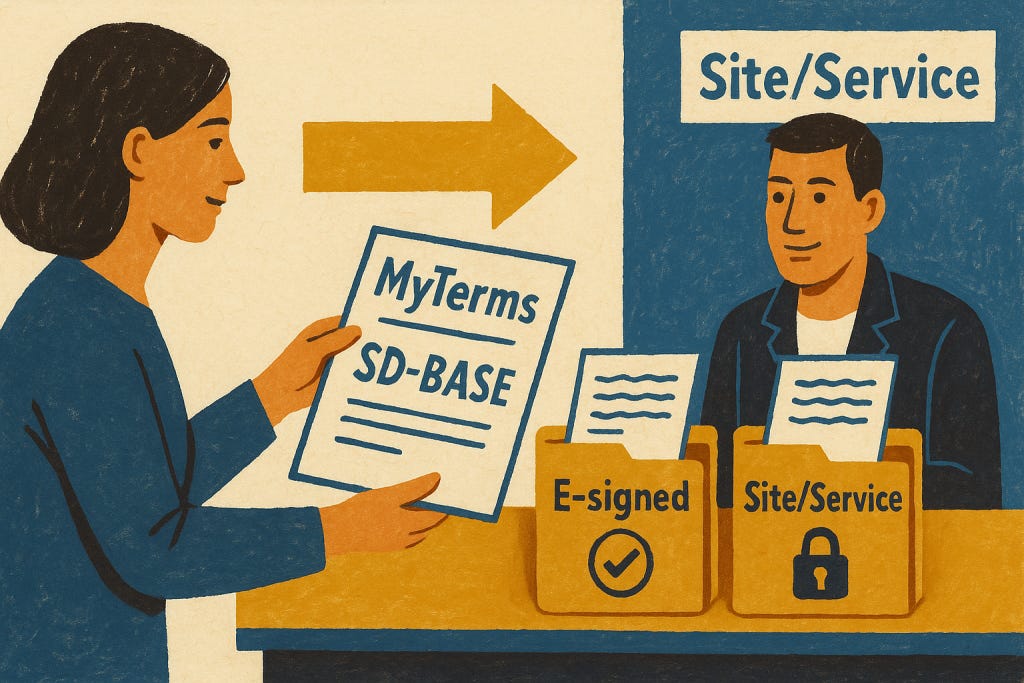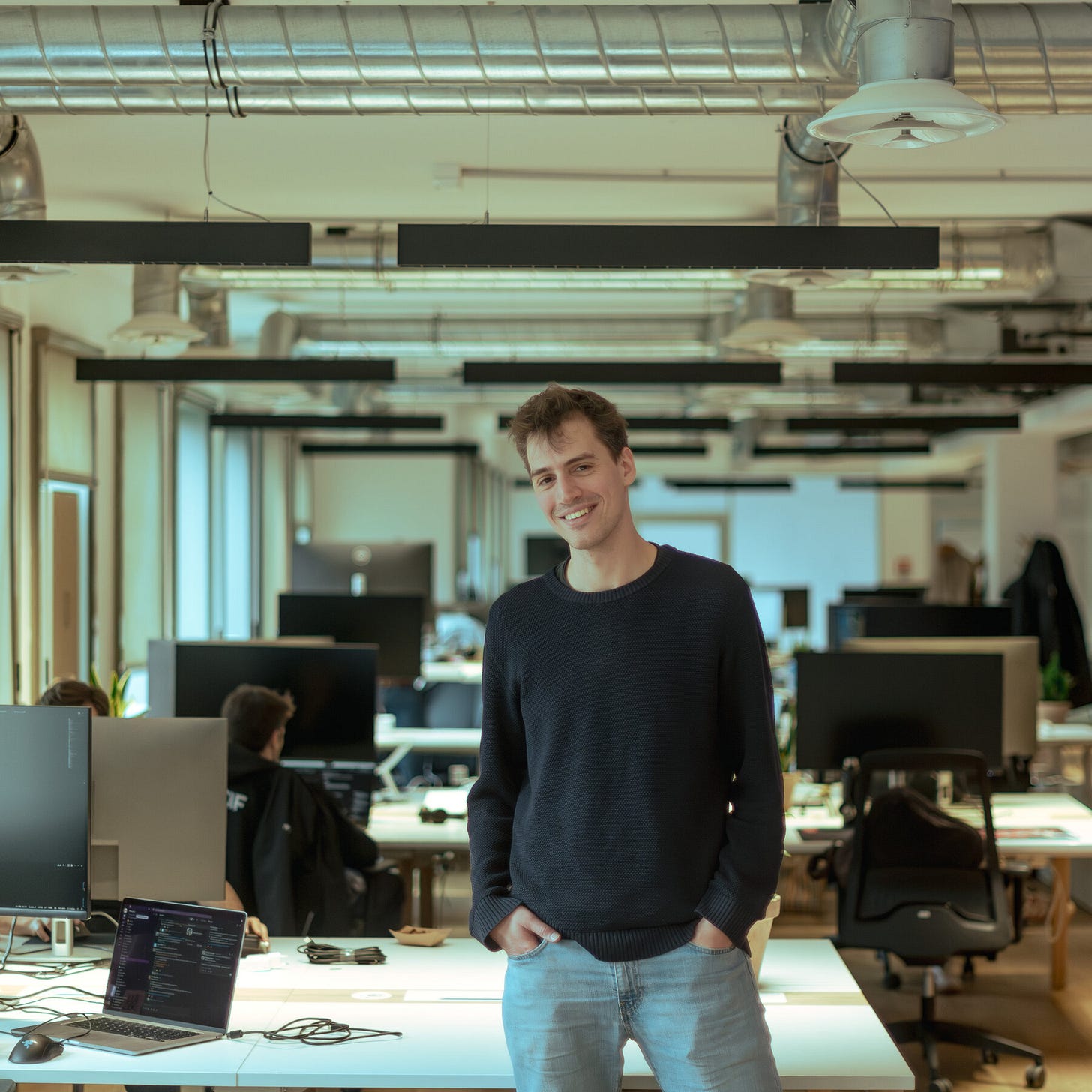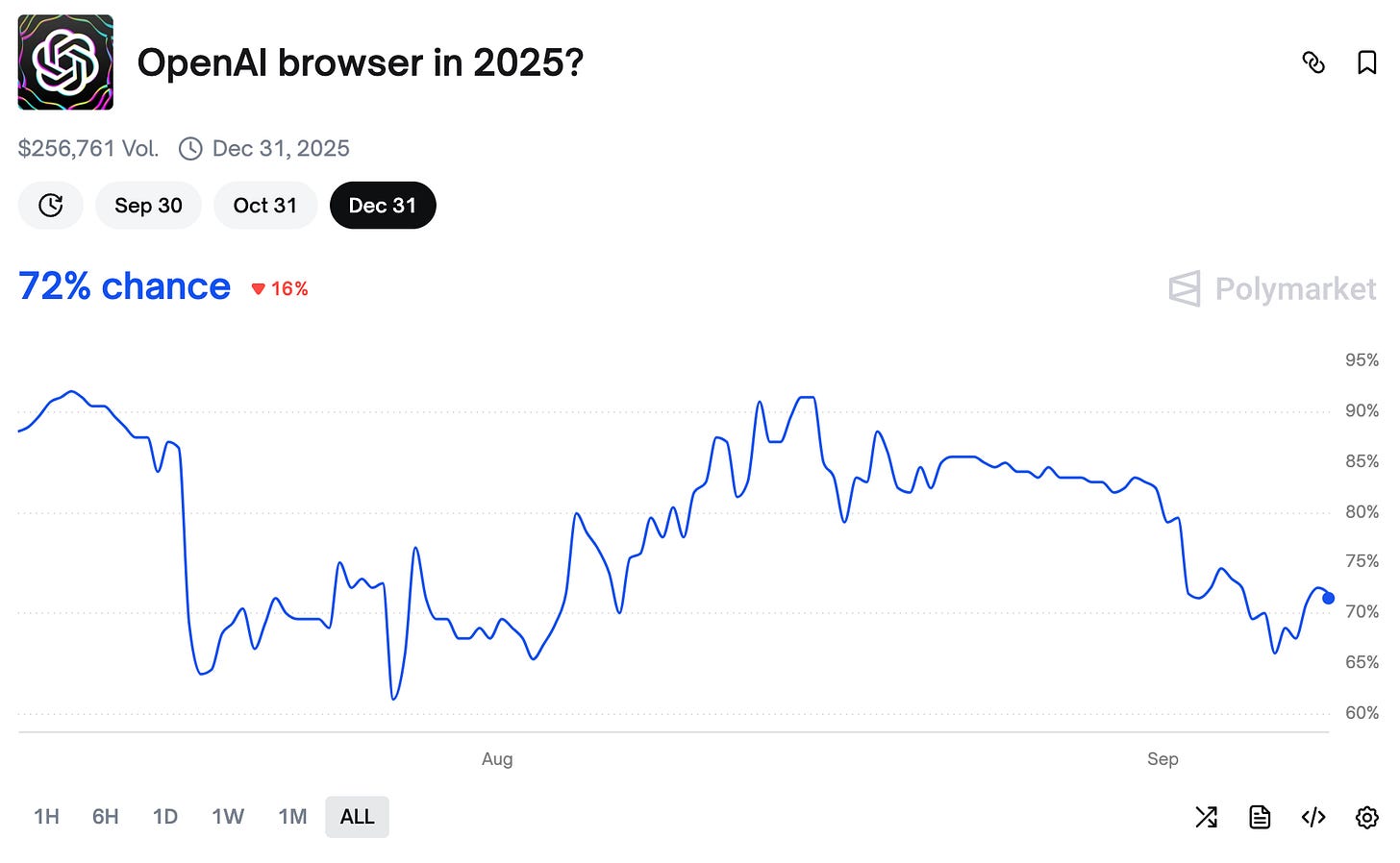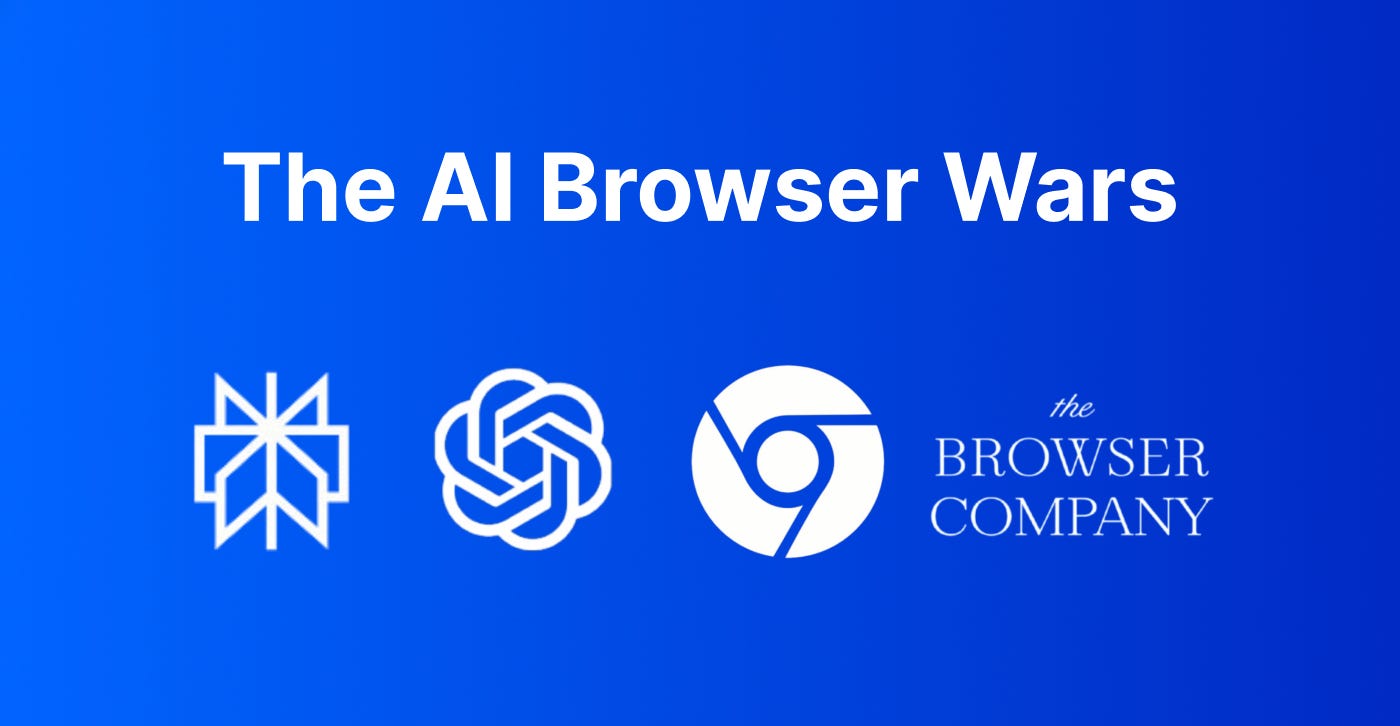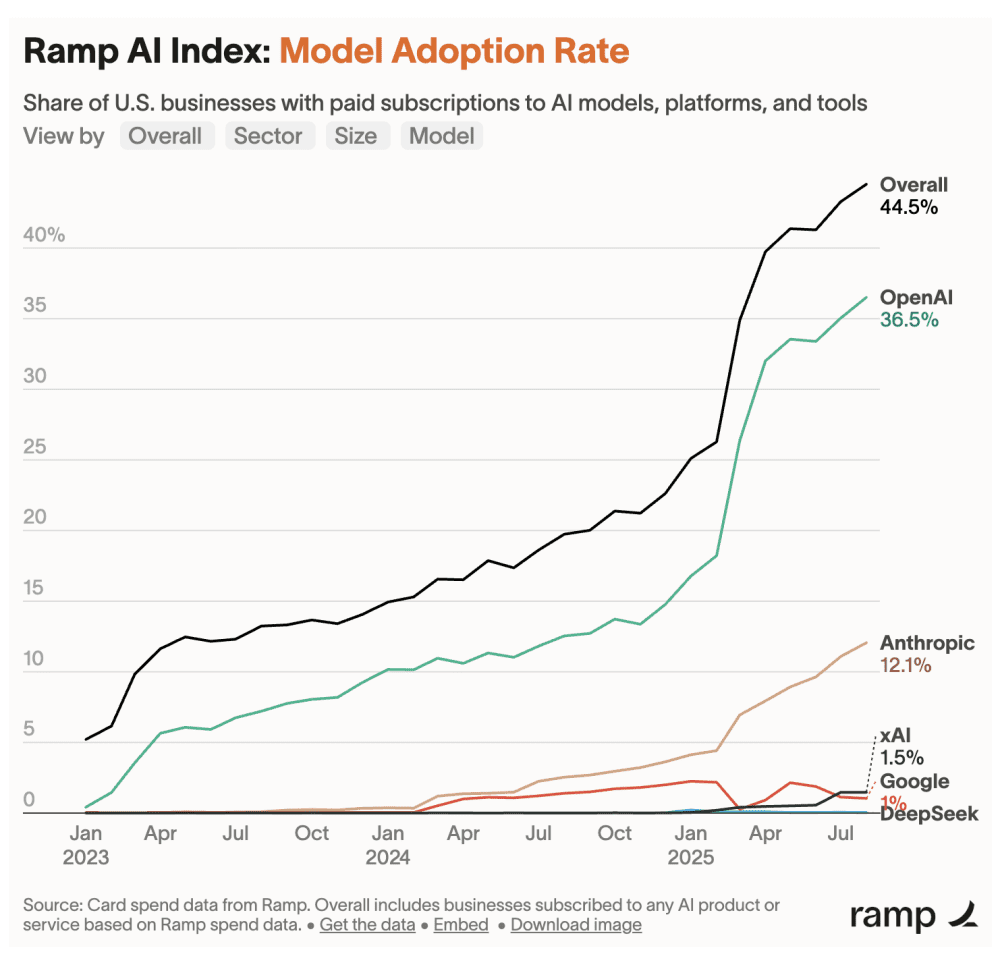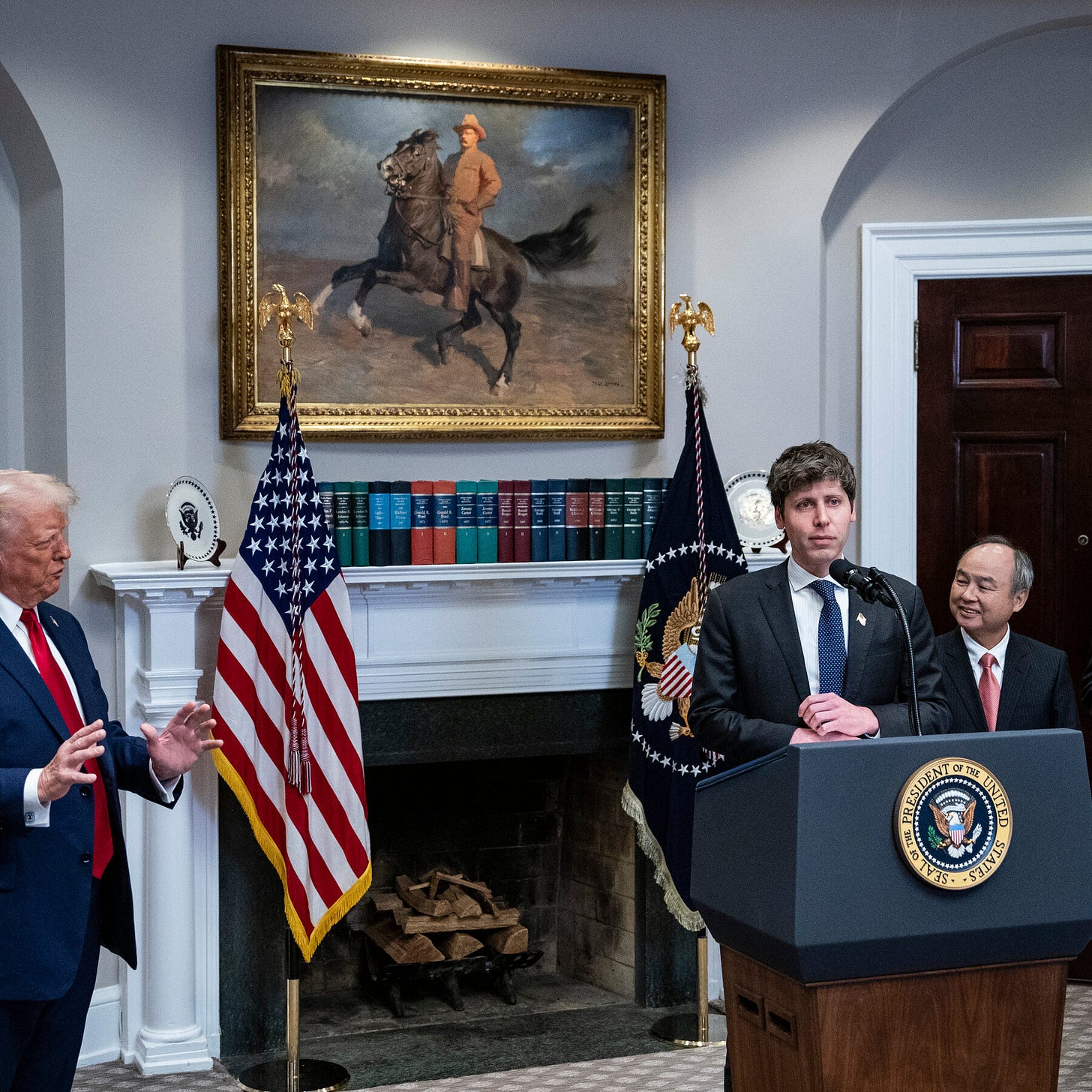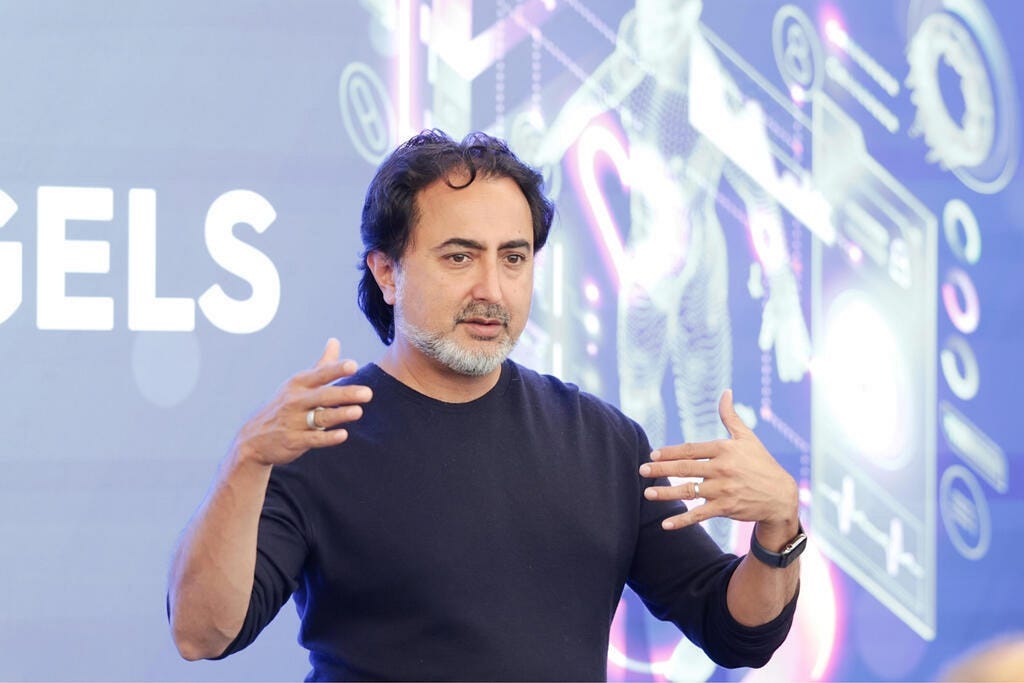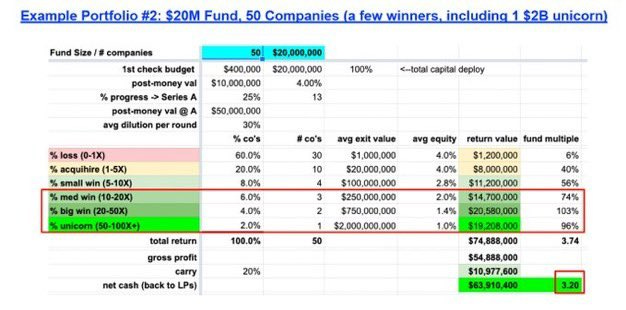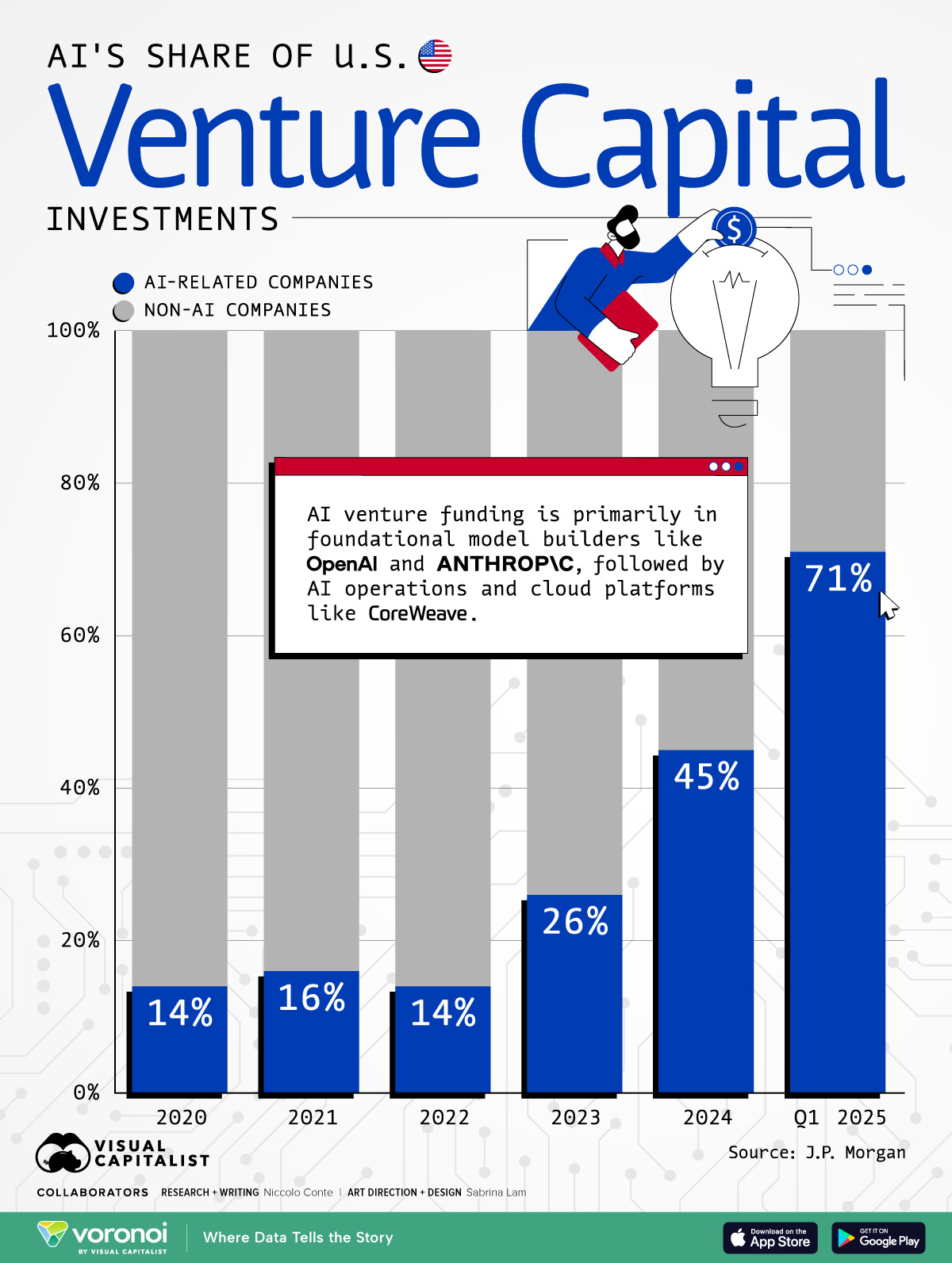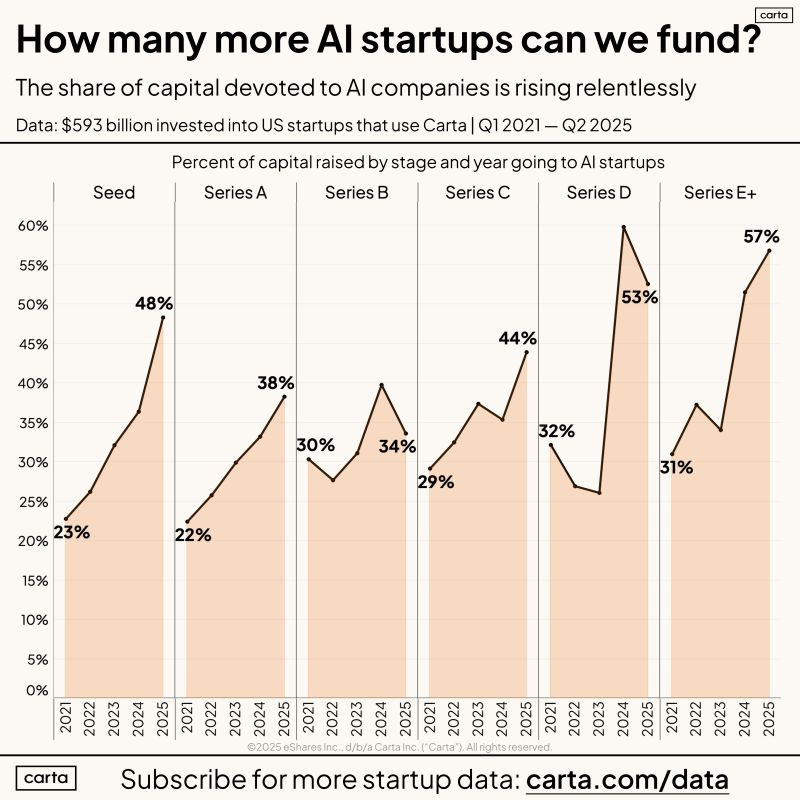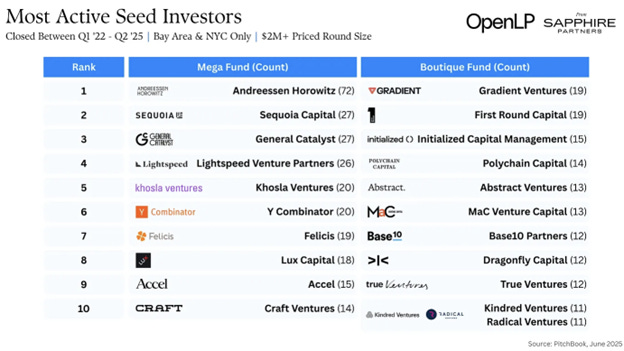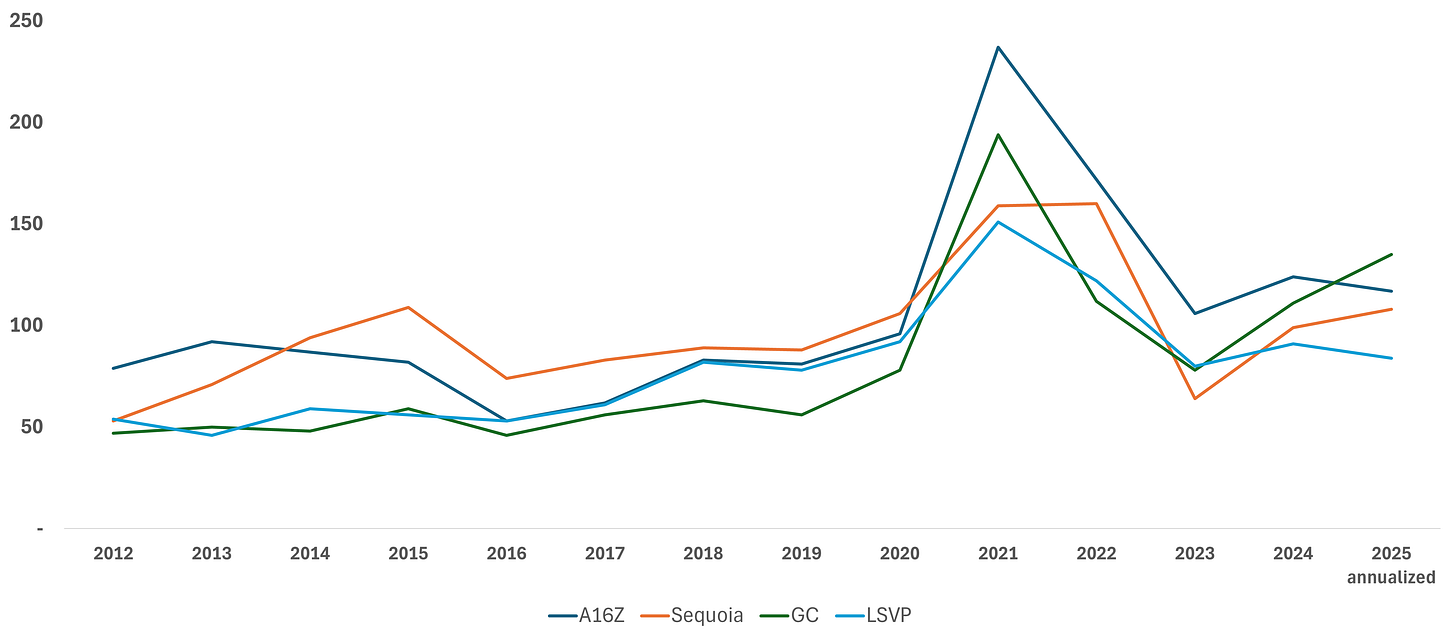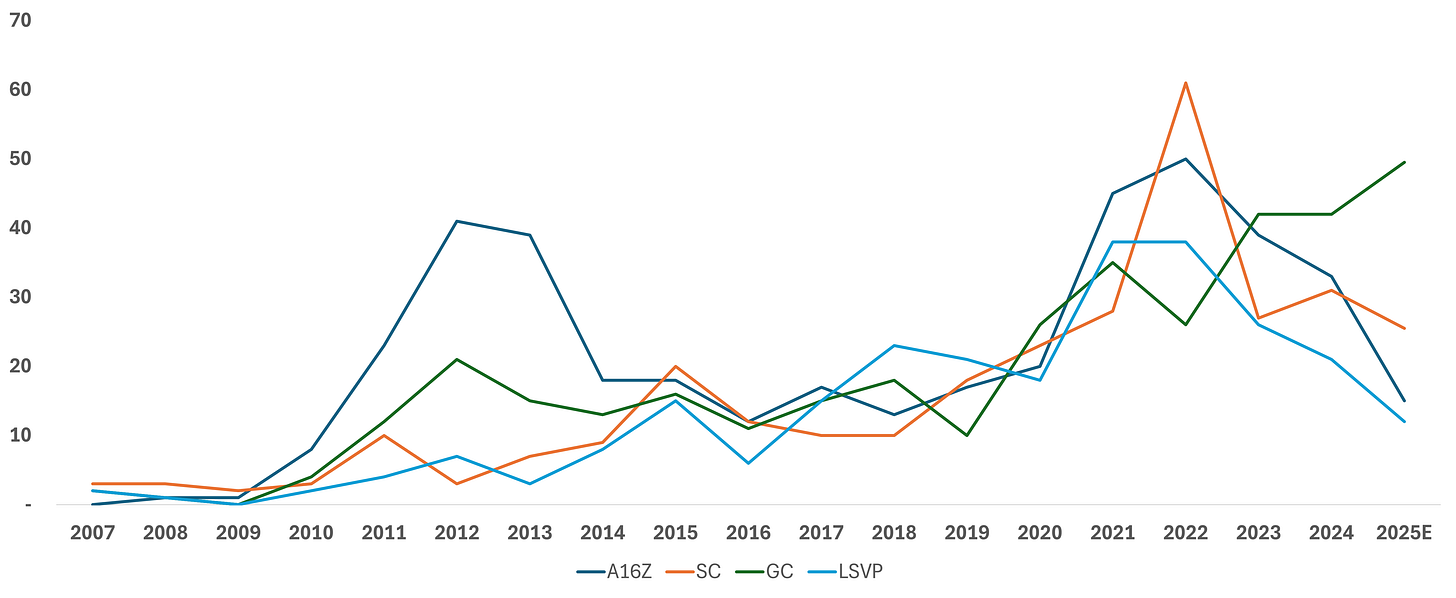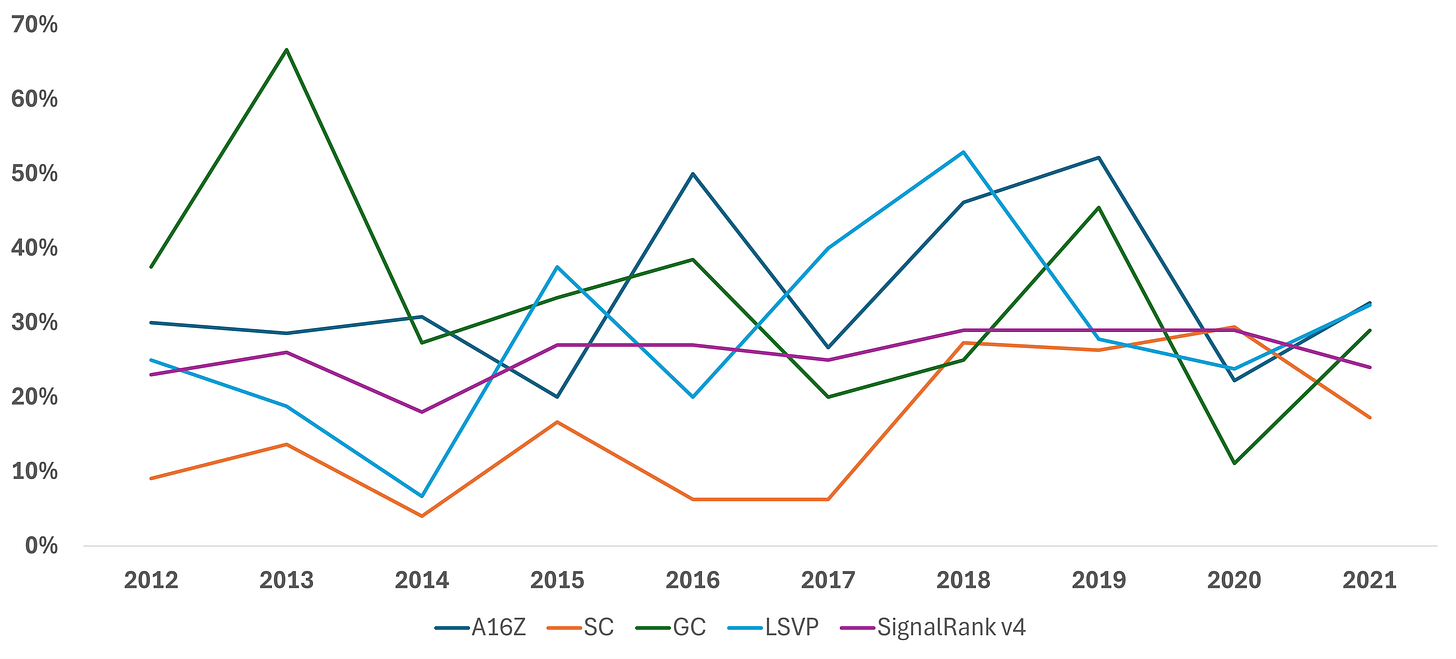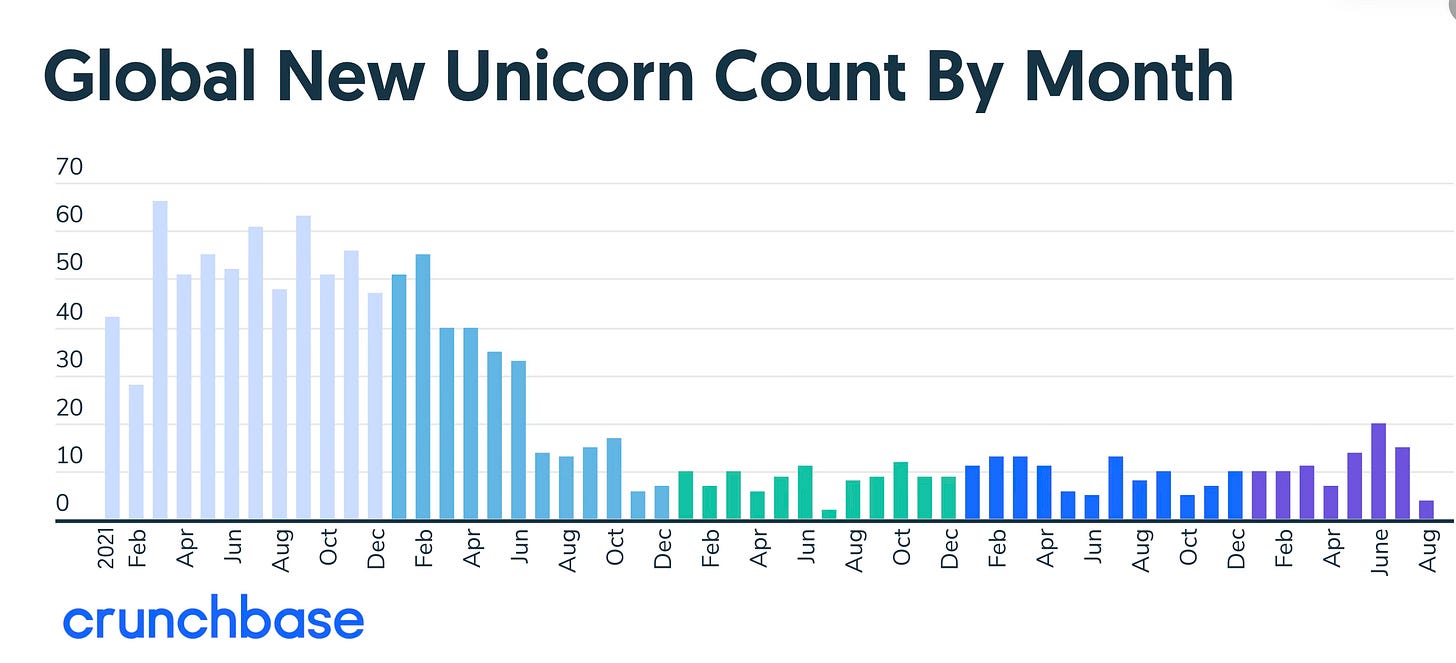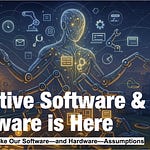Contents
Editorial: Optimizing for Change: Why Exuberance is Required
Essays
AI
OpenAI Takes Big Steps Toward Its Long-Planned Reorganization
OpenAI Says Spending to Rise to $115B Through 2029: Information
ElevenLabs CEO/Co-Founder, Mati Staniszewski:The Untold Story of Europe’s Fastest Growing AI Startup
ASML to Invest $1.5 Billion in Mistral, the French A.I. Start-Up
The AI Agent Reality Check: Why Managing Always-On AI Workers Is Your Next Big Challenge
OpenAI Signs $300 Billion Data Center Pact With Tech Giant Oracle
Media
Venture
Education
Interview of the Week
Startup of the Week
Post of the Week
Editorial:
Optimizing for Change. Why Exuberance is Required.
This week there is a lot of focus on the spending associated with AI. OpenAi and Oracle inking a $300 billion deal and ASML in Europe investing well over $1 billlion in Mistral are drivers of the conversation. Exuberance and Bubble are being used a lot in link seeking headlines.
But these are contentless labels ignoring the possibility that what we are seeing is not exuberance but rational investment in a humanity transforming technology. The underlying cause of the negativity is simply disbelief, not intellect. Fear masquerading as thought.
What looks like excess is, in fact, urgency. A $300B OpenAI–Oracle data center pact, $115B of projected OpenAI spend through 2029, and a $100B shift of ownership to OpenAI’s nonprofit aren’t vanity metrics; they’re the scaffolding of a new civic utility. Pair that with ASML’s €1.3–1.5B bet on Mistral and SpaceX’s $17B spectrum deal for direct‑to‑phone connectivity from space, and the signal is unmistakable: we’re industrializing intelligence, not just iterating software.
Investment is not an option, it is a necessity if the human impact of AI is to be realized. The measure of that is in answering the question of AI’s impact on the Gross Domestic Product of the world. Today global GDP is about $108 trillion annually. Most sanguine forecasters suggest the minimum return on investment from AI will be to add $20 trillion to global GDP by 2035. Others go way higher, suggesting a doubling of GDP. AI is already 2-3% of global GDP and we are only in year 2 of real revenue production.
OpenAI and Anthropic are leading hte charge here, and are able to garner large amounts of capital due to the potential outcomes.
Does this mean that the current valuations will survive and grow? There is no way to know, because valuations are driven by future looking models and current sentiment about them. But will value be created far above the investments we are seeing, absolutely yes.
Jon Callaghan of True Ventures staets this plainly in his essay about Capex:
Instead of thinking “this time is different”, I’d rather assume that “this time things will be approximately the same” in terms of how we estimate the scale of value to be created, especially the relationship of early capex spending to application layer buildout and value.
The waves of innovation in these past 3 decades have “rhymed” (or to update this analogy, “looped”) in terms of certain patterns, one of which I think of as the “Capex Multiplier.” Web 1.0, Web 2.0, Cloud/SaaS, and Mobile have all shown a consistent pattern of early capex foundation investment followed by the creation of tremendous value over time at the application layer. How much value? About 5x-10x the initial infrastructure investment.
In the case of AI the multiplier is likely to be far higher because of the prize, global access to human knowledge and the ability to act on it, delivered for almost free to most humans.
Again Jon:
We’re squarely in the AI capex buildout now, with most estimates converging around $2 trillion in AI infrastructure spending over this five- year period. Just last week, Jensen upped his prediction of AI capex to $3 trillion to $4 trillion over the next 5 years, and McKinsey & Co puts the number at $7 trillion by 2030.
Applying a 5-7x Capex Multiplier to these numbers yields a staggering approximation of $15 trillion to $30 trillion in net new value to be created at the application layer over the next couple of decades, or less. (Some waves have been faster than others).
This week’s essay about Yamanaka Factors is a good case study in potential. By studying proteins scientists have reversed aging in mice. Rebuilt decaying cells. Extended life. The belief is that this will be usable with humans. The economic consequences are unmeasurable.
Another case, SpaceX buying Echostar’s space delivered spectrum so it can deliver global high bandwidth internet to the entire planet. A $17 billion bet for a far higher payout.
Finally Apple’s new Air Pods Pro 3 - delivering real time translation between speakers of 2 different languages, leveraging models that run on an iPhone, and the noise cancellation feature of the iPods. This is the Star Trek ‘universal translator’ but hundreds of years early.
What does this mean? Investment and spending numbers have to be measured against outcomes. There is no bubble or exuberance if the outcomes dwarf the costs. Tming? Well it can take decades of course, and there can be ups and downs along the journey. But with AI I would bet on a far shorter payback due to the speed of innovation and the breadth of applications.
Just like the Air Pods Pro 3, AI is going to be built into everything and will improve human life. Is there any price too high to pay for the gains that will produce?
Our stance is unambiguous: lean in. The week’s stories show the costs are high because the prize is human—faster care (biotech and Yamanaka‑era rejuvenation pipelines), wider opportunity (creators, investors, students), stronger institutions (augmentation over automation). Exuberance is justified when paired with clear guardrails and measurable outcomes. Build the capacity. Codify the rights. Then let the work compound.
Essay
🚨 Elon Musk: "The actions of the West are indistinguishable from suicide."
Youtube • All-In Podcast • September 9, 2025
GeoPolitics•USA•Elon Musk•Essay•Western Civilization
Core message
A brief clip captures Elon Musk declaring that “the actions of the West are indistinguishable from suicide,” a stark warning about the direction of Western societies. Delivered in the conversational, rapid-fire format typical of short-form video, the line functions as a thesis: that a cluster of prevailing decisions and cultural reflexes, when aggregated, could undermine the West’s long-run vitality and security. The tone is urgent and polemical, designed to provoke reflection on whether current trajectories in policy and culture align with long-term survival and competitiveness.
Context and framing
The short isolates a single, memorable line rather than a detailed argument, inviting viewers to infer the backdrop: longstanding debates about Western economic competitiveness, institutional effectiveness, social cohesion, and strategic clarity. The framing suggests Musk views current choices not as discrete missteps but as interconnected patterns with compounding effects. The clip’s brevity and emphatic phrasing emphasize salience over nuance, a strategy well-suited to social distribution and shareability.
Key themes signaled
Civilizational resilience: The “suicide” metaphor implies systemic self-harm—decisions that degrade capacity to innovate, defend interests, or maintain social confidence.
Policy inertia vs. dynamism: The remark hints at frustration with bureaucratic drag and risk-averse governance that may slow technological progress or industrial renewal.
Strategic coherence: It gestures toward the need for consistent priorities across energy, defense, technology, and economic policy to avoid cross-purpose actions.
Cultural feedback loops: The statement suggests cultural norms can either reinforce or erode ambition, excellence, and demographic or economic vitality, depending on how they reward behaviors and allocate status.
Implications and stakes
If taken seriously, the line challenges leaders and institutions to stress-test whether current choices are additive or erosive to Western strength over decades, not just news cycles. The metaphor underscores compounding risk: fragmented policies and symbolic gestures can aggregate into meaningful declines in productivity, deterrence, or social trust. It also implies that course correction is possible: diagnosing “suicidal” patterns is a call for agency—re-aligning incentives, accelerating constructive innovation, and reducing self-imposed constraints that do not materially advance safety or prosperity.
Why this resonates in short form
Virality through paradox: “Indistinguishable from suicide” pairs moral gravity with rhetorical compression, making it memorable and debate-sparking.
Audience activation: Viewers project their own policy concerns—energy, industry, migration, defense, education, regulation—onto the line, broadening relevance.
Agenda-setting: By elevating the frame from single-issue complaints to a civilizational lens, the clip encourages integrative thinking across domains typically siloed in public debate.
Considerations and counterpoints
While the clip’s strength is urgency, its weakness is underspecification: without enumerated policies or metrics, the claim risks overgeneralization. Critics might argue the West retains unmatched assets—rule of law, deep capital markets, top research universities, and alliances—that complicate any “suicide” narrative. Supporters could reply that precisely because the West starts from strength, complacency is the greater danger; the line is intended to jolt stakeholders into safeguarding advantages before they erode.
Key takeaways
The clip elevates a civilizational risk frame, arguing that current Western choices collectively threaten long-term strength.
It prioritizes urgency and memorability over specificity, functioning as a prompt for broader debate rather than a policy brief.
The remark implies a call to action: re-align policy, culture, and incentives with durable competitiveness, innovation, and social cohesion.
Palantir CEO Alex Karp on Why Modern Progressivism is Broken
Youtube • All-In Podcast • September 10, 2025
Media•Broadcasting•Palantir•AlexKarp•Progressivism
Overview
Palantir CEO Alex Karp argues that modern progressivism is “broken,” framing his critique around outcomes versus intentions. Speaking in a compact exchange, he contrasts moral rhetoric with practical governance, suggesting that a fixation on signaling virtue has crowded out competence, security, and the ability to solve concrete problems. He positions himself as results-first, drawing from Palantir’s work with national security and government agencies to claim that real-world constraints, not ideological purity, should drive policy and technology choices. The tone is combative but pragmatic: Karp says the measure of any political project is whether it keeps citizens safe, preserves freedoms, and delivers services efficiently.
Core Arguments
Progressivism’s focus on performative ideals: Karp contends that contemporary progressive politics prioritizes language, posturing, and symbolic wins over measurable societal improvements.
Competence over slogans: He maintains that critical domains—public safety, border integrity, and defense readiness—require operational excellence and hard trade-offs rather than aspirational narratives.
Technology as a governance lever: Referencing his vantage point in enterprise software, Karp implies that modern states must adopt high-grade data systems and AI responsibly to make timely, accountable decisions, especially in security contexts.
On Security, Freedom, and Responsibility
Karp links safety to liberal values, arguing that civil liberties become fragile when governments can’t maintain order or deter threats. He suggests that a functioning liberal society needs both robust security apparatuses and strong guardrails for privacy and civil rights. The failure, in his telling, is not progressivism’s goals—fairness, inclusion, justice—but its inability to build institutions and tools that actually deliver them. He urges a more “adult” politics that accepts trade-offs, sets priorities, and measures results, especially where technology and policy intersect.
Implications for Policy and Tech
Procurement and delivery: Karp implies that modernizing government technology stacks—and rewarding what works—should outrank ideological loyalty in hiring and contracting.
AI governance: He gestures toward a middle path that welcomes AI for defense, safety, and service delivery while imposing transparent accountability to protect civil liberties.
Social contract: A credible progressive (or any) politics, he argues, must reduce crime, secure borders, and improve everyday public services; otherwise, voters will defect to alternatives promising order and competence.
Key Takeaways
Outcomes matter more than moral messaging; voters evaluate safety, efficiency, and prosperity, not slogans.
Governments need operational competence and modern software to meet contemporary threats and social needs.
A sustainable liberal order balances security with rights; neglecting either undermines both.
Technologists and policymakers should collaborate on measurable goals, rigorous evaluation, and transparent oversight to regain public trust.
Yamanaka Factors
Matthewharris • Matthew Harris • September 6, 2025
Essay•Education•Yamanaka Factors•Partial Reprogramming•Regenerative Medicine
Well, in mice, they're using these Yamanaka factors to make the mice age the equivalent of like 250 years now. It's really incredible. And there are human clinical trial starting. So the Yamanaka factors, you guys will recall, are the four proteins that were identified that basically can turn any cell back into a stem cell.
Later, there was research done where they took those four Yamanaka factors and they applied a low dose of them to a cell. And rather than have the cell turn all the way back into a stem cell, that cell effectively became young again.
It started to repair and heal itself, repair its DNA, repair its gene expression networks, and the cell returned back to its original state. So the equivalent to think about this in a body is now you've got skin that loses its wrinkles, eye cells that start to see better, brain that starts to work better, muscles that start to work better, and so that is rejuvenation.
What are Yamanaka Factors?
You may already know the headline idea. Four genes named Oct4, Sox2, Klf4, and c Myc can push an old cell back toward a youthful state. Scientists discovered this in 2006, then showed it in human cells in 2007. Turning these genes on fully wipes gene identity and creates stem cells.
The translational move is different. You turn a subset on, and only for short pulses, so the cell keeps its identity, yet regains youthful programs. That is called partial reprogramming.
Yamanaka factors are named after Shinya Yamanaka, who discovered them in 2006 in his lab in Kyoto. The four specific transcription factors he discovered are, Oct3/4, Sox2, Klf4, and c-Myc.
Fast primer for context
Think of the genome as hardware, and the epigenome as software that tells the hardware what to run. Aging shifts that software in predictable ways. DNA methylation changes, chromatin opens and closes in the wrong places, and gene expression drifts.
Yamanaka factors act like a software terminal. Used carefully, they do not replace the hardware, they debug damaged blocks of code toward a more youthful pattern so the code runs the way it used to.
The 'data moats' fallacy
Platforms • September 7, 2025
Essay•AI•Data Moats•NetflixVsBlockbuster•Fulfilment Architecture
Netflix vs. Blockbuster is one of those well-worn stories that suggest quick and obvious explanations - all of which successfully miss the point.
The first misconception is that Netflix’s streaming beat Blockbuster’s DVD rental. But Netflix was way ahead way before streaming entered the picture.
If you rewind the tape a little further, another generic explanation is Netflix’s better customer experience - no more late fees, no more humiliation at the checkout counter when you returned “Titanic” three days late.
The trouble is, Blockbuster did adapt. Once Netflix’s no-late-fee policy started luring away customers, Blockbuster eliminated late fees too. When Netflix’s DVD-by-mail model gained steam, Blockbuster copied that as well, complete with its own red envelopes. On the surface, it matched Netflix feature for feature. Yet Blockbuster still collapsed.
Finally, the last bastion of defence: Netflix had better data, which helped it personalize recommendations for its customers.
But it’s yet another case of true, but utterly useless.
The real reason - fulfilment architecture
In a 2020 post, Amazon is a logistics beast, I explain what really helped Netflix stand out:
The one thing that Blockbuster could never compete with was the integration of demand-side queuing data (users would add movies that they wanted to watch next into a queue) with a national-scale logistics system. All this queueing data aggregated at a national scale informed Netflix on upcoming demand for DVDs across the country.
Blockbuster could only serve users based on DVD inventory available at a local store. This resulted in:
1) low availability of some titles ( local demand > local supply), and
2) low utilization of other titles (local supply > local demand).
Netflix, on the other hand, could move DVDs to different parts of the US based on where users were queueing those titles. This resulted in higher availability while also having fewer titles idle at any point.
Queueing data improved stocking and resulted in higher utilization and higher availability. It allowed Netflix to serve local demand using national inventory.
Debunking the ‘data is our moat’ fallacy
The “data is our moat” fallacy is the belief that simply accumulating large amounts of proprietary data automatically creates a durable competitive advantage.
Defensible advantage in data-driven businesses does not come from having data in isolation, but from the data-informed architecture a company builds.
What matters is the architecture that emerges when data is embedded in the system itself. Netflix’s queue created an entirely new operating model. Competitors could mimic features and even acquire similar datasets, but they could not easily rip out and rebuild their architecture without unraveling their existing model.
The puzzle of Netflix versus Blockbuster, in other words, was not about who had the data, but about who used it to reconfigure the logic of the business. Blockbuster never escaped the gravity of its old architecture.
In short, the fallacy is mistaking data as an asset in isolation for data-informed system design. The former is often transient; the latter, when well-architected, can produce durable advantage.
AI as Normal Technology, revisited
Platformer • Casey Newton • September 9, 2025
Essay•AI
Overview
The piece revisits a now-influential argument about artificial intelligence as a “normal technology” whose full societal impact unfolds over decades rather than months or years. The authors behind a widely cited timelines paper reportedly continue to hold that view: enduring transformation requires long diffusion cycles, complementary investments, and institutional adaptation. The core tension the essay probes is whether, despite those long-run dynamics, many of the promised disruptions appear to have already arrived in everyday life.
What the “normal technology” view means
AI is framed as a general-purpose technology whose value compounds through complementary assets: data pipelines, computing infrastructure, redesigned workflows, and a workforce retrained to use new tools.
Major productivity gains follow a J-curve: initial excitement and visible demos, then a valley of process reengineering and policy work, and finally broad-based gains once organizations absorb the technology.
Timelines are thus measured in decades because diffusion, standards, procurement, and governance move far slower than product demos.
Evidence that change feels immediate
Consumer and workplace behaviors are shifting: conversational search and lightweight agents in productivity suites; code generation and data analysis tools lowering barriers for non-specialists; and AI-assisted media creation reshaping editorial and marketing workflows.
In education, the rapid appearance of AI tutors, grading aids, and writing support is reshaping classroom norms, assignment design, and academic integrity conversations.
The visibility of these shifts creates a perception gap: localized, high-impact use cases can give the impression of total transformation even while many sectors remain largely untouched.
Reconciling the paradox
Both can be true: early, concentrated impact and long-run, society-wide transformation. Early adopters and knowledge workers experience step changes; lagging sectors (manufacturing, healthcare delivery, public services) require standards, liability clarity, and integration with legacy systems.
Measurement lags obscure progress. Traditional productivity statistics and firm-level KPIs often miss quality improvements, reduced time-to-draft, or new product varieties until they are scaled across entire organizations.
Diffusion depends on complements: secure data access, audit trails, reliable model behavior, and governance for safety and privacy. Without these, pilots stall before organization-wide rollout.
Education as a proving ground
Rapid policy oscillation—from bans to structured adoption—illustrates the institutional work needed to harness AI while preserving learning goals.
The emerging consensus emphasizes: teaching AI literacy; shifting assessment toward process, oral defense, and applied projects; and integrating tools transparently rather than policing impossible boundaries.
Equity questions loom: access to capable devices, paid models, and high-quality guidance may widen achievement gaps unless institutions provision shared resources and training.
Risks and guardrails
Hallucinations, bias, and privacy leakage remain operational risks; mitigation requires model choice, retrieval-augmented workflows, and clear human-in-the-loop checkpoints.
Over-reliance can deskill students and workers if assignments and tasks are not redesigned to cultivate judgment, critique, and domain understanding.
Governance will likely standardize around provenance, logging, and impact assessments, aligning incentives for safe deployment without stifling experimentation.
Implications for leaders
Treat AI adoption as an organizational change program, not a feature toggle: invest in data readiness, role definitions, and training.
Pilot where benefits are clear and risks are bounded; codify playbooks; then scale. Expect a multi-year path from promising prototypes to firm-wide transformation.
In education and knowledge work, prioritize transparent use, skill-building, and assessment redesign to turn AI into a complement rather than a crutch.
Key takeaways
The “decades-long transformation” thesis emphasizes complements, diffusion, and institutional change.
Fast-moving, high-visibility use cases can coexist with slow, system-wide adoption.
Education shows both the pace of change and the governance work required.
Sustainable impact depends on infrastructure, skills, and policy—not model demos alone.
Does valuation matter any more in the age of AI?
Ft • September 8, 2025
Essay•AI•Valuation
Thesis and Context
The core argument is that in markets reshaped by artificial intelligence, the durability of a company’s revenue growth and profit margins can be more important than whether a stock looks optically “cheap” on traditional metrics. Cheapness (low price-to-earnings, price-to-book, or enterprise-value-to-sales ratios) may signal cyclical or structural headwinds, while durable growth with resilient margins reflects business models that can harness AI-driven efficiencies, network effects, and product differentiation over long horizons. In such an environment, investors prioritize the persistence and quality of cash flows rather than snapshot multiples that may understate a company’s compounding potential.
Why Durability Can Outweigh Cheapness
Durable growth indicates recurring demand, pricing power, and high switching costs—features often amplified by AI-enabled products and data moats.
Sustained profit margins point to defensible competitive advantages, efficient cost structures, and scalability; AI can deepen these through automation, personalization, and improved decisioning.
Traditional value screens can misclassify winners: companies investing heavily in AI or software may appear expensive today but compound at superior rates for longer than typical cycles.
What ‘Durable Growth’ Looks Like in the AI Era
Recurring revenue and embedded products that become “must-have” workflows; AI augments these with continuous learning, making offerings stickier.
Data advantages: proprietary or high-quality data sets improve model performance, reinforcing customer value and lowering churn.
Distribution and ecosystems: platforms with developer and partner networks leverage AI features across multiple products, extending lifetime value.
Operating leverage from AI: customer support, sales, and R&D productivity gains can expand margins even as the business scales.
Implications for Valuation
Higher multiples may be rational if a company’s growth runway and margin resilience are credibly long-dated. The key variable is duration: how many years of above-market growth and elevated returns on invested capital are plausible before mean reversion?
Valuation work shifts from single-period comparables to multi-scenario discounted cash flow thinking that stress-tests growth persistence, margin trajectories, and capital intensity (including AI infrastructure).
Quality of earnings matters: cash conversion, unit economics, and cohort retention provide better signals of durability than headline revenue growth alone.
Signals to Assess Durability vs. Optical Cheapness
Evidence of pricing power (e.g., successful upsells to AI-enhanced tiers) and stable or rising gross margins despite input cost volatility.
Customer metrics—net revenue retention, expansion rates, contract duration—indicating products are becoming more embedded as AI capabilities improve outcomes.
Efficiency metrics—operating margin trends, R&D productivity, and sales efficiency—that reflect AI-driven leverage rather than one-off cost cuts.
Competitive dynamics: barriers created by data, distribution, compliance, and partnerships can make AI capabilities hard to replicate.
Risks and Counterpoints
Capital intensity can rise: training and inference costs, along with infrastructure spending, may compress margins for firms without sufficient scale or pricing power.
Commoditization risk: if AI features become baseline across an industry, differentiation narrows and multiples should compress toward historical norms.
Regulatory and trust constraints: governance, privacy, and model risk management can add costs and slow deployment, tempering margin expansion.
Forecast error: durability narratives can be overextended; when growth normalizes, high-multiple stocks can de-rate sharply.
Investor Playbook
Focus on the triangle of growth, margins, and reinvestment discipline. Favor companies demonstrating expanding addressable markets from AI features, rising free cash flow margins over time, and prudent capital allocation.
Use scenario analysis to test how long superior growth and margins can persist under varying compute costs, competitive responses, and regulatory regimes.
Distinguish between efficiency-led margin gains (sustainable) and temporary cuts (fragile). Look for product-led pricing and customer outcomes as anchors of endurance.
Key Takeaways
In an AI-driven market, the length and resilience of exceptional growth and margins can justify higher valuations.
Traditional cheapness metrics risk missing compounding businesses where AI enhances moats and operating leverage.
The analytical edge lies in assessing durability—customer stickiness, data advantages, pricing power, and scalable efficiency—rather than chasing low multiples.
iPhones 17 and the Sugar Water Trap
Stratechery • Ben Thompson • September 10, 2025
Essay•AI•iPhone
I think the new iPhones are pretty great.
The base iPhone 17 finally gets some key features from the Pro line, including the 120Hz Promotion display (the lack of which stopped me from buying the most beautiful iPhone ever).
The iPhone Air, meanwhile, is a marvel of engineering: transforming the necessary but regretful camera bump into an entire module that houses all of the phone’s compute is Apple at its best, and reminiscent of how the company elevated the necessity of a front camera assembly into the digital island, a genuinely useful user interface component.
Oh, and the Air’s price point — $999, the former starting price for the Pro — finally gave Apple the opening to increase the Pro’s price by $100.
What was weird to me yesterday, however, is that my enthusiasm over Apple’s announcement didn’t seem to be broadly shared. There was lots of moaning and groaning about weight and size (get an iPhone Air!), gripes about the lack of changes year-over-year, and general boredom with the pre-recorded presentation (OK, that’s a fair one, but at least Apple ventured to some other cities instead of endlessly filming in and around San Francisco). This post on Threads captured the sentiment:
This is honestly very confusing to me: the content of the post is totally contradicted by the image! Just look at the features listed:
What to Look for in an Entrepreneur
Davidcummings • David Cummings • September 6, 2025
Essay•Venture
Last week I was catching up with an entrepreneur who was thinking about doing some angel investing, and he asked me what I look for in other entrepreneurs. Over the years, I’ve had the opportunity to work with many great people and learn from their experiences. Entrepreneurship is not a one-size-fits-all journey, but I’ve found some common characteristics that show up again and again in successful entrepreneurs.
1. A Desire to Improve
There are constant ups and downs in entrepreneurship. One moment you’re high-fiving your co-founder after signing a new customer, and the next a key employee leaves and you just want to curl up and cry. The entrepreneurs who succeed have a deep desire to improve. They want to learn, grow, figure out what works and what doesn’t, and take lessons from others who have gone before them. This thirst for learning is a key trait.
2. A Unique View on Risk
Many people see starting a new venture as too risky. Entrepreneurs, on the other hand, often have enthusiasm for calculated risk, especially risks that look uncertain or unlikely to succeed to the average person. They either have a unique angle or an unusually strong belief that they can overcome the challenges. This different perspective on what is and isn’t risky is a defining characteristic.
3. A Chip on the Shoulder
Almost every entrepreneur I’ve worked with has had some compelling drive or unusual background that pushes them to prove themselves in an extreme way. The old saying holds true: chips on shoulders equal chips in pockets. In other words, entrepreneurs with something to prove often end up creating significant value for themselves and their investors.
4. MacGyver-Level Resourcefulness
Resourcefulness is another common trait. The best entrepreneurs love to “MacGyver” their way into opportunities, finagling introductions, connecting seemingly unrelated dots, and figuring out how to make progress when others would stop. Whether it’s landing a first customer, solving a daunting problem, or raising a round of funding after many rejections, this tenacity and creativity greatly increase their chances of success.
5. A Glass-Half-Full Outlook
Finally, successful entrepreneurs tend to believe they can change the world, an industry, or even a city. This optimism, sometimes born from blissful ignorance, helps sustain them when progress is slow, opportunities are scarce, or things are going wrong. A positive outlook creates space for unexpected magic, where unexplainable good outcomes seem to come together at just the right time.
Privacy is a Contract
Searls • September 11, 2025
Essay•Regulation•Privacy•MyTerms•Adtech
SD-BASE is a contract you might proffer that means service delivery only. It makes explicit the tacit understanding we have when we go into a store for the first time: that the store’s service is what you came for, and nothing more. Other terms from a roster of MyTerms choices might allow, for example, anonymous use of personal data for AI training. Or for intentcast signaling*.
In the natural world, privacy is a social contract: a tacit agreement that we respect others’ private spaces. We guard those spaces with the privacy tech we call clothing and shelter. We also signal what’s okay and what’s not using language and gestures. “Manners” are as formal as the social contract for privacy gets, but those manners are a stratum in the bedrock on which we have built civilization for thousands of years.
We don’t have it online. The owner of a store who would never think of planting tracking beacons inside the clothes of visiting customers does exactly that on the company website. Tracking people is business-as-usual online.
The reason we can’t have the same social contract for privacy in the online world as we do in the offline one is that the online world isn’t tacit. It can’t be. Everything here is digital: ones, zeroes, bits, bytes, and program logic. If we want privacy in the online world, we need to make it an explicit requirement.
Policy won’t do it. The GDPR, CCPA, DMA, the ePrivacy Directive, and other regulations are all inconveniences for the $trillion-plus adtech (tracking-based advertising) fecosystem.
“Consent” through cookie notices doesn’t work, because you have no way of knowing if “your choices” are followed. Neither does the website, which has jobbed that work out to OneTrust, Admiral, or some other CMP (consent management platform), which we presume also doesn’t know or much care. Nearly all of those “choices” are also biased toward getting your okay to being tracked.
Polite requests also don’t work. We tried that with Do Not Track, and by the time it finished failing, the adtech lobby had turned it into Tracking Preference Expression. Like we wanted to be tracked after all.
What we need are contracts—ones you proffer and sites and services agree to. Contracts are explicit, which is what we need to make privacy work in the online world. Again, there is no tacit here, beyond the adtech fecosystem’s understanding that every person on the Web is naked, and perfect for exploitation.
This is why we’ve been working for eight years on IEEE P7012 Draft Standard for Machine Readable Personal Privacy Terms, aka MyTerms. With MyTerms, you are the first party, and the site or service is the second party. You present an agreement chosen from a limited roster posted on the public website of a disinterested nonprofit, such as Customer Commons, which was built foro exactly this purpose.
When the other side agrees, you both keep an identical record. (The idea is for Customer Commons to be for privacy contracts what Creative Commons is for copyright licenses.)
AI
OpenAI Takes Big Steps Toward Its Long-Planned Reorganization
Nytimes • Karen Weise and Cade Metz • September 11, 2025
AI•Funding•OpenAI•Microsoft•CorporateGovernance
Overview
OpenAI signaled a sweeping shift in its structure and financing by announcing it has “reached a tentative deal with Microsoft,” its largest backer, and that it intends to transfer “a $100 billion stake” to the nonprofit that oversees the organization. Together, these moves point to a long-anticipated reorganization—one that could rebalance control, clarify mission alignment, and reshape how outside capital interacts with OpenAI’s governance model, which has historically blended a mission-driven nonprofit with a for‑profit operating entity.
What’s New
OpenAI disclosed a tentative agreement with Microsoft, reinforcing a partnership that has underpinned the company’s infrastructure, distribution, and commercialization strategy.
The company said it would give “a $100 billion stake” to the nonprofit that manages it, indicating a major shift of economic rights or control from existing holders toward its governing body.
These steps suggest an effort to consolidate oversight while preserving strategic alignment with a critical investor and technology partner.
Strategic Rationale
The proposed transfer of such a large stake to its nonprofit overseer likely aims to codify OpenAI’s mission-first guardrails at the ownership level. By placing substantial economic interest or control with the nonprofit, OpenAI can better align incentives around safety, long-term research priorities, and public benefit, rather than near-term growth alone. The tentative deal with Microsoft meanwhile secures continued access to capital, cloud capacity, and go-to-market reach, reinforcing the commercial backbone needed to sustain frontier model development.
Governance and Structure
Mission alignment: Elevating the nonprofit’s stake could tighten the link between governance and the organization’s stated public-interest goals, reducing the risk of mission drift as product lines and revenue scale.
Checks and balances: A larger nonprofit stake may introduce stronger checks on commercialization decisions, including deployment timelines, model releases, and safety thresholds, while still enabling pragmatic collaboration with a strategic investor.
Investor relations: Existing investors and employees may see changes to cap tables, economics, or voting rights depending on how the transfer is structured; “tentative” suggests details remain under negotiation.
Implications for Stakeholders
For Microsoft: The deepened partnership could secure priority access to OpenAI’s research and product pipeline, fortify Azure’s AI moat, and create tighter integration across developer tools and enterprise offerings—while also navigating a governance framework that elevates nonprofit oversight.
For regulators: A reorganization that concentrates influence in a nonprofit may draw scrutiny, but it can also be framed as a pro‑safety move. Competition authorities will watch how technical and distribution advantages flow between OpenAI and Microsoft, especially if exclusivities are extended.
For the AI ecosystem: If successful, this hybrid model—mission-centric control with strategic corporate partnership—could become a template for other frontier labs seeking both scale and guardrails. It may also intensify the race to secure long-term cloud, chip, and capital commitments.
Operational Considerations
Execution risk: Translating “tentative” into finalized agreements requires resolving valuation mechanics, rights, and fiduciary responsibilities between nonprofit and for‑profit entities.
Talent and incentives: The structure must still attract and retain top researchers and engineers; compensation, liquidity pathways, and governance clarity will be essential.
Safety and compliance: With nonprofit control expanded, expect more formalized safety milestones, auditing, and external assurance frameworks around model release and usage.
Key Takeaways
OpenAI says it has a “tentative deal with Microsoft” and plans to give “a $100 billion stake” to its nonprofit manager.
The moves signal a major reorganization intended to align ownership with mission while preserving strategic scale and resources.
Success hinges on final deal terms, regulatory response, and the company’s ability to balance frontier innovation with robust safety governance.
OpenAI Says Spending to Rise to $115B Through 2029: Information
Bloomberg • September 5, 2025
AI•Funding•OpenAI
OpenAI Inc. told investors it projects its spending through 2029 may rise to $115 billion, about $80 billion more than previously expected, The Information reported, without providing details on how and when shareholders were informed.
OpenAI is in the process of developing its own data center server chips and facilities to drive the technologies, in an effort to control cloud server rental expenses, according to the report.
ElevenLabs CEO/Co-Founder, Mati Staniszewski:The Untold Story of Europe’s Fastest Growing AI Startup
Youtube • 20VC with Harry Stebbings • September 8, 2025
AI•Tech•ElevenLabs•MatiStaniszewski
ASML to Invest $1.5 Billion in Mistral, the French A.I. Start-Up
Nytimes • September 9, 2025
AI•Funding•ASML•Mistral•Investment
Overview
ASML, a Dutch maker of semiconductor equipment, plans to invest about $1.5 billion in Mistral, a French artificial intelligence start-up. In the article’s core line, “ASML, the Dutch maker of semiconductor equipment, is investing about $1.5 billion in Mistral, the French A.I. start-up.” This single move links one of the world’s most consequential chip equipment companies with a fast-growing European A.I. developer, signaling intensified alignment between compute infrastructure and model innovation across Europe.
Deal Snapshot
Parties: ASML (investor) and Mistral (recipient)
Sector link: Semiconductor equipment meets artificial intelligence software
Scale: “About $1.5 billion,” indicating a multi-billion-dollar commitment
Geography: Cross-border within Europe (Netherlands to France)
Why It Matters
Capital intensity in A.I.: The investment acknowledges that cutting-edge A.I. development demands substantial capital for training, deployment, and scaling. A $1.5 billion commitment underscores the scale required to remain competitive in frontier model development and enterprise rollout.
Hardware–software alignment: A strategic tie-up between a chip-tool maker and a model developer could create tighter feedback loops between model requirements and the systems that manufacture the chips those models run on. Even without disclosed terms, the basic structure suggests a bid for more co-optimization across the stack.
European technology ambitions: A large intra-European investment points to efforts to strengthen the region’s A.I. ecosystem. By pairing a European industrial champion with a European A.I. lab, the move could help concentrate know-how, talent, and deployment within the region.
Potential Strategic Rationale
Demand signaling: The investment may reflect confidence in long-term A.I. compute demand, as model builders require sustained access to advanced chips and efficient training and inference pathways.
Product and roadmap insights: Closer proximity to an active A.I. lab can provide early insight into emerging workload patterns, informing how future systems, processes, or manufacturing priorities might evolve.
Ecosystem building: Backing a high-profile start-up can catalyze partnerships with cloud providers, enterprises, and research institutions, forming a broader European A.I. network around shared goals.
Implications for Stakeholders
For enterprise adopters: Greater resources behind a European A.I. start-up may translate into faster product cycles, more robust support, and clearer roadmaps for safely deploying generative and predictive A.I. in regulated industries.
For developers and researchers: The capital can expand compute access, talent hiring, and research throughput, potentially accelerating progress in model capabilities, tooling, and evaluation frameworks.
For policy and industry groups: A prominent intra-European investment can serve as a reference point for industrial policy discussions focused on competitiveness, resilience, and technological sovereignty.
What to Watch Next
Deployment focus: Whether the funding translates into targeted industry solutions (e.g., verticalized A.I. offerings) or primarily fuels foundational model development.
Partnership contours: Any follow-on collaborations around data centers, compute procurement, or co-engineering relationships that align model needs with future silicon and systems.
Market response: How peers—both in chip supply chains and among A.I. start-ups—adjust strategies, including potential new alliances, funding rounds, or joint research initiatives.
Key Takeaways
A landmark cross-sector investment connects a semiconductor equipment leader with a European A.I. start-up.
The “about $1.5 billion” scale highlights the capital requirements of modern A.I. and the strategic value of aligning hardware and software.
The move signals confidence in long-term A.I. demand and may strengthen Europe’s role in the global A.I. race.
Watch for downstream partnerships, product acceleration, and ecosystem effects as the investment unfolds.
ASML and Mistral agree €1.3bn blockbuster European AI deal
Ft • September 8, 2025
AI•Funding•ASML•Mistral•USChinaTensions
Overview
ASML, the Dutch semiconductor equipment leader, has struck a €1.3bn agreement with Mistral, the French artificial intelligence company, in a move framed as a strategic European response to intensifying US‑China tech rivalries. The deal positions a core hardware gatekeeper of the global chip supply chain alongside one of Europe’s fastest‑rising AI model developers, signaling a bid to consolidate regional capabilities across compute, hardware, and foundational model development. The article characterizes Mistral as a national “AI champion,” and notes that escalating geopolitical tensions are reshaping corporate and government priorities across the industry. The reported value—€1.3bn—underscores an unusually large, Europe‑focused AI transaction, suggesting long‑term financial backing and collaboration rather than a narrow, short‑term contract.
What the deal signals
Scale and intent: The €1.3bn figure indicates a multi‑year commitment that likely spans R&D, infrastructure, and deployment support, rather than a singular investment round or procurement agreement.
European capacity building: By pairing ASML’s central role in advanced lithography with Mistral’s model‑building capabilities, the partnership aims to deepen Europe’s self‑reliance in the AI stack—from compute access to applied model integration.
Strategic endorsement: The “backs” framing suggests ASML is not merely a customer; it is endorsing and enabling a home‑grown foundation model player, elevating Mistral’s position in enterprise and public‑sector markets.
Geopolitical hedging: As export controls and supply constraints reshape chip flows, aligning a European equipment leader with a European model developer reduces exposure to external chokepoints and policy whiplash.
Context: US‑China tensions and supply chain realities
Great‑power competition has made access to cutting‑edge compute and manufacturing tools a policy lever. ASML’s tools are already central to global advanced chipmaking; closer ties with a European AI developer provide a regional counterweight while navigating an increasingly fragmented regulatory landscape.
For AI companies, the most durable competitive advantages are shifting toward secure compute availability, dependable hardware roadmaps, and trusted data pipelines—areas where cross‑border European partnerships can smooth procurement and compliance.
Potential implications
For European AI: Expect accelerated model training cycles, more predictable compute access, and stronger commercialization pipelines in sectors like government, defense‑adjacent industries, and regulated enterprise verticals.
For competitors: The deal could pressure US hyperscalers and Chinese model labs by demonstrating that Europe can mobilize large‑scale capital and industrial champions to support local AI leaders.
For policy alignment: It dovetails with Europe’s push for digital sovereignty, data protection, and trustworthy AI, potentially creating reference deployments that meet stringent European regulatory expectations.
For supply chains: Tighter coupling between upstream equipment and downstream AI applications may lead to co‑designed solutions that optimize model performance per watt and per euro—crucial as compute costs rise.
Key takeaways
A rare, Europe‑centric AI transaction of €1.3bn elevates Mistral and signals ASML’s strategic role beyond equipment supply.
The partnership is both industrial and geopolitical—aimed at resilience, autonomy, and competitiveness amid US‑China tensions.
Expect faster productization, stronger enterprise adoption, and a template for future alliances linking European hardware and AI model capabilities.
The AI Agent Reality Check: Why Managing Always-On AI Workers Is Your Next Big Challenge
Saastr • Jason Lemkin • September 8, 2025
AI•Work•AIAgents•Automation•SaaS
The brutal truth about AI agents that nobody talks about online and at conferences.
I’ve been running SaaStr itself and B2B companies for over two decades. I’ve managed teams across time zones, dealt with burnout, navigated the remote work revolution, and thought I’d seen every workforce challenge imaginable.
I was wrong.
After deploying 11 true AI agents across SaaStr operations, I’ve discovered the most counterintuitive management challenge of our generation: It’s not about making humans work harder. It’s about keeping up with workers who never stop.
The 996 Fallacy vs. The AI Reality
For years, Silicon Valley has debated work-life balance. The infamous “996” culture (9am-9pm, 6 days a week) became a symbol of unsustainable hustle culture during the 2020-2022 era. We fought for better boundaries, more reasonable hours, and human-centered workplaces. It then became a symbol of the AI Era the past 12-18 months.
Now as AI agents have arrived, and suddenly we’re dealing with something entirely different: workers who operate 24/7/365 without breaks, vacations, or sleep.
Your AI agents don’t just work 996. They work 996++. They’re processing data at 3 AM. They’re optimizing campaigns on weekends. They’re analyzing customer feedback during your family dinner. They never stop, never tire, never ask for time off.
This isn’t a feature—it’s your biggest operational challenge.
OpenAI Backs AI-Made Animated Feature Film
Wsj • Jessica Toonkel • September 7, 2025
AI•Funding•OpenAI•Critterz•Cannes
The film, called “Critterz,” aims to debut at the Cannes Film Festival and will leverage the startup’s AI tools and resources.
OpenAI is backing production of the AI-assisted animated feature, providing software and computing power to help accelerate the filmmaking process. The project is led by Chad Nelson, a creative specialist at the company, and expands on a 2023 short developed with OpenAI image-generation tools. The feature-length version is being produced in collaboration with UK-based Vertigo Films and Los Angeles studio Native Foreign.
“Critterz” follows a community of forest creatures whose world is upended by the arrival of an unexpected stranger. The filmmakers plan to complete the movie on a timeline of about nine months—far faster than conventional animated features—while keeping the budget under $30 million. Human voice actors and artists remain central to the production, with AI used to iterate on concept art, environments, and certain animation workflows.
The team is exploring a profit-sharing model across a roughly 30-person crew and aims for a global theatrical release in 2026. While the film does not yet have a distribution partner, the Cannes premiere target is intended to showcase how generative tools can reduce costs and speed up production without replacing human creativity. The effort comes amid ongoing industry debates about copyright, labor concerns, and the appropriate role of AI in entertainment.
The AI Browser Wars
Tanayj • Tanay Jaipuria • September 9, 2025
AI•Tech•Browser Wars•Chrome•Perplexity Comet
Hi friends,
A lot is happening in AI browser land, so let’s talk about it. Just this past week, Atlassian agreed to buy The Browser Company, the makers of Arc and Dia for $610M in cash and a federal judge declined to force Google to sell Chrome, which keeps the incumbent’s distribution power intact. Perplexity continues to roll out Comet more broadly. OpenAI is widely reported to be prepping a browser of its own.
Let’s jump in and discuss:
Why the browser matters
Who the major AI browser contenders are
Why the browser matters for AI
I expect the browser to be an interesting battleground going forward for the following reasons.
Distribution surface: Default slots in browsers are worth billions. Google paid Apple about $20B in 2022 to be Safari’s default search on iOS, and spent $26.3B in 2021 across devices and platforms to secure default status. A recent ruling lets Google keep paying partners for defaults, which preserves that distribution engine. Mozilla’s finances also show how powerful this channel is, with a large majority of revenue tied to its Google search deal. Search was the original beneficiary of these defaults, and chat assistants are now stepping into the same front door.
Place where agents happen: The browser already sits where work happens, so it is a natural potential control plane for agents. You can grant page context, watch steps, and take over when needed. That is why new products position the browser as an agent desk. Perplexity’s Comet launched as an agentic browser that researches and acts from the page. The Browser Company’s Dia makes it easy to use AI skills and assistants using the context of a webpage. Together, these moves show agents gravitating to the browser surface first, particularly as human in the loop happens. The fact that the browser also holds identity, cookies and app state across various apps and tools people use also further helps further this idea.
OpenAI vs. Anthropic: Ramp Data Shows 36% vs. 12% Penetration, But Velocity Curves Tell a Different Story
Saastr • Jason Lemkin • September 11, 2025
AI•Data•OpenAI
Ramp just released its latest data on LLM Model Spend data and it shows about what you’d expect … but it also highlights the strong momentum with Anthropic. Ramp itself has crossed a stunning $1B ARR and manages billions and billions of spend:
Summary & 2026-2027 Projections:
Current landscape: OpenAI leads at 36.5%, Anthropic accelerating at 12.1%, with 44.5% overall business adoption
Key insight: This reflects discrete AI purchases, not enterprise contract spending—Google’s 1% severely understates actual usage
2026 projection: Anthropic likely reaches 20-25% of business wallets, OpenAI plateaus around 40-45%, overall adoption hits 70-80%
Strategic implication: Credit card data captures the “prosumer enterprise” segment—critical for go-to-market but incomplete for total market assessment
Bottom Line Up Front: OpenAI dominates discrete AI purchases at 36.5% adoption among U.S. businesses, but this credit card spending data tells only part of the enterprise AI story—and reveals a massive blind spot in how we measure AI market share.
The latest data from Ramp Economics Lab just dropped a bombshell on the AI industry’s favorite parlor game: who’s really winning the LLM wars? Based on business credit card spend data from U.S. businesses with paid AI subscriptions, we’re finally getting real market insight beyond the hype cycles and PR announcements. But there’s a crucial caveat every SaaS leader needs to understand.
The Critical Data Limitation: Credit Cards vs. Enterprise Contracts
This Ramp data tracks business credit card transactions for AI subscriptions—which means we’re seeing discrete AI tool purchases, not massive enterprise API contracts or bundled cloud spending. That distinction completely changes how we interpret these numbers:
What’s Actually Being Measured: SMBs buying ChatGPT Team, mid-market companies expensing Claude Pro, startups purchasing API credits on corporate cards. This is the “prosumer enterprise” segment—businesses making tactical AI purchases rather than strategic platform commitments.
What’s Missing in Data: Google’s 1% market share of Ramp spend suddenly makes sense. Most Google AI usage happens through existing Cloud Platform contracts, Workspace bundles, or massive enterprise deals that never touch a corporate credit card. Same logic applies to Microsoft/Azure OpenAI deployments and AWS Bedrock usage.
The Current Leaderboard: 44.5% Overall Adoption in the Visible Market
Looking at the share of U.S. businesses with paid credit card subscriptions to AI models, platforms, and tools:
Overall AI Adoption: 44.5% – Businesses making discrete AI purchases (the visible iceberg tip)
OpenAI: 36.5% – Dominates direct-pay subscriptions but this understates enterprise API usage
Anthropic: 12.1% – Strong in subscription model, likely reflecting their direct-pay positioning
xAI: 1.5% – Limited enterprise traction despite Musk’s platform, but quickly up from basically 0%
Google: 1% – Severely understated due to bundled/contract spending patterns
DeepSeek: <1% – Minimal commercial adoption despite open-source buzz
OpenAI Signs $300 Billion Data Center Pact With Tech Giant Oracle
Nytimes • September 10, 2025
AI•Funding•DataCenters•Oracle•OpenAI
Overview
OpenAI has entered a sweeping data center arrangement with Oracle that is described as a $300 billion pact to accelerate construction of U.S.-based A.I. infrastructure. According to the report, the funding “covers more than half of the A.I. data centers that OpenAI plans to build in the U.S. over the next several years,” signaling a multi-year, nationwide buildout of high-performance computing capacity. This scale points to an aggressive roadmap for expanding training and inference resources to meet surging demand for advanced models and enterprise deployments.
Scale and financing
The headline figure underscores two related realities: frontier A.I. now requires industrial-scale capital, and the bottleneck has shifted from algorithms to power, land, chips, and buildings. A $300 billion commitment, if deployed over several years, would rival or exceed the capex of entire hyperscale clouds in prior cycles. The detail that the funding covers “more than half” of OpenAI’s planned U.S. sites implies a portfolio approach—multiple campuses across states with favorable power prices, land availability, and streamlined permitting. Oracle’s participation suggests a blend of cloud services, financing structures, and potentially long-term capacity reservations tailored to A.I. workloads.
Infrastructure and siting considerations
Delivering this footprint will hinge on four constraints:
Power availability and grid interconnects: Large A.I. campuses can require gigawatts of capacity, driving co-development with utilities, substation builds, and long-lead transmission upgrades.
Cooling and water: Heat density from advanced accelerators pushes operators toward liquid cooling and, in some regions, reclaimed water or air-cooled designs to minimize freshwater draw.
Supply chains: Securing accelerators, networking gear, and transformers at scale requires multi-year procurement and close coordination with chip and power-equipment makers.
Speed-to-market: Modular designs, standardized data hall blocks, and pre-approved site plans will be critical to meet “over the next several years” timelines.
Strategic motives and division of roles
For OpenAI, the arrangement concentrates capital and execution risk with a partner equipped to finance, build, and operate cloud-scale facilities. For Oracle, it positions the company as a central enabler of A.I. compute capacity, potentially deepening its role in training and serving state-of-the-art models while expanding enterprise offerings. The structure likely blends dedicated capacity for OpenAI with cloud-region expansion that benefits Oracle’s broader customer base, aligning incentives across utilization, efficiency, and uptime.
Economic and policy implications
A program that covers more than half of OpenAI’s planned U.S. data centers will ripple across labor markets, local tax bases, and state-level industrial strategies. Expect intensifying competition among states for sites, with incentives tied to jobs, grid upgrades, and clean-energy procurement. At the federal level, the concentration of critical A.I. infrastructure may draw scrutiny related to competition, supply-chain security, and energy policy. The buildout could accelerate adoption of renewable power purchase agreements, spur investments in battery storage and firming resources, and catalyze innovation in heat reuse, microgrids, and demand-response.
Risks and execution challenges
Key risks include delays in utility interconnection, scarcity of specialized equipment (notably transformers and high-speed networking), and the pace of accelerator deliveries. Cost escalation—from construction materials to energy prices—could pressure budgets and timelines. Community concerns over water usage and land development may require additional mitigations and transparency. Finally, the rapid cadence of A.I. model evolution raises the risk of technological obsolescence; designs must remain adaptable to new architectures and higher power densities.
Key takeaways
Reported pact size: $300 billion, aimed at accelerating OpenAI’s U.S. A.I. data center expansion.
Coverage: “More than half” of OpenAI’s planned U.S. sites over “the next several years,” indicating a multi-campus, multi-year program.
Strategic fit: Pairs OpenAI’s compute needs with Oracle’s financing, cloud operations, and data center delivery capabilities.
Broader impact: Significant implications for U.S. energy grids, supply chains, and state-level economic development, alongside potential regulatory attention.
Execution focus: Power procurement, cooling innovation, supply-chain resilience, and modular construction will determine speed and cost-efficiency.
Media
Techmeme is Turning Twenty
Pxlnv • Nick Heer • September 9, 2025
Media•Journalism•Techmeme•GabeRivera•NewsAggregation
Fred Vogelstein, of Crazy Stupid Tech, interviewed Techmeme founder Gabe Rivera on the occasion of its forthcoming twentieth anniversary:
But Techmeme looks and works exactly the same way as it always has. And it has never been more popular. Traffic is up 25 percent this year, likely driven by the explosion of interest in AI, Rivera says.
[…]
Now the software finds and ranks the stories. But the editors write the headlines. When stories are generated by corporate press releases/announcements, they choose which media outlet’s story is driving the most interesting social media conversations. The software also chews on the API feeds from the big social networks to come up with a list of the most useful conversations. Editors approve all those, however, to prevent duplication.
Since I learned about Techmeme in the late 2000s or early 2010s, I have admired many of its attributes. Its barely-changing design speaks to me, especially with its excellent use of Optima. More than anything, however, is its signature way of clustering related stories and conversations that keeps me coming back. That feature was one of the sources of inspiration for this very website. The differing perspectives are useful beyond a single story or topic; it has been a source of discovery for other websites and writers I should keep an eye on.
The steadiness of the site masks some of the changes that have been made over the years, however. Not too long ago, the community discussion section of any topic was merely a list of tweets. However, since about 2023, I think, it has also incorporated posts from other social networks and message boards. This is a welcome improvement.
Silicon Valley trends may come and go, but I hope Techmeme continues to evolve at its present geological pace.
Apple Introduces iPhone 17, iPhone Air and Updated AirPods at Annual Event
Nytimes • Tripp Mickle and Brian X. Chen • September 9, 2025
AI•Tech•iPhone
As inflation has risen, some businesses have flourished by selling more for less. But with its newest iPhone, Apple is taking the opposite approach and offering less for more.
On Tuesday, the company unveiled a new iPhone that is thinner and smaller than previous models. The titanium-encased smartphone is a third less thick than previous models but has fewer cameras and less battery life than its predecessors. It is called the iPhone Air and costs $999.
The single camera has a second telephoto lens and uses artificial intelligence to sharpen images, allowing it to offer the same photography features as previous models, Apple said. It also has software to conserve battery, so that it can offer all-day battery life.
“It’s a paradox you have to hold to believe,” said Abidur Chowdhury, an industrial designer who introduced the device during an hourlong product event from the company’s headquarters in Cupertino, Calif.
The device headlined an event that was punctuated by announcements of price increases for some of its most popular iPhones, with the cost of the Pro and Pro Max models rising by $100, to $1,099 and $1,199.
And in a move that increases profit margins with the iPhone 17 Pro for Apple, the company replaced the titanium material found on previous Pro phones with aluminum, a cheaper material. In a marketing video, Apple said it had to revert to aluminum because it redesigned the phone’s hardware.
Apple’s creator-centric iPhone 17 Pro will make the vlogging camera obsolete
Techcrunch • Amanda Silberling • September 9, 2025
Media•Social
Apple unveiled its new line of iPhones on Tuesday, and the iPhone 17 Pro is making a direct appeal to content creators.
For years, the iPhone camera has met the needs of most casual users, effectively replacing consumer point-and-shoots. But millions of creators — an audience estimated in the hundreds of millions — have still relied on dedicated handheld video cameras from Canon, Sony, Panasonic, Nikon and Fujifilm.
Those companies now sell entire “vlogging camera” lines with flip-out screens and social-friendly formats. The iPhone 17 Pro, however, is positioned to be the device that finally sidelines those extra cameras.
A major change is the 17 Pro’s camera sensor, which is 56% larger than the iPhone 16 Pro’s. A bigger sensor boosts low‑light performance, depth of field control and overall image quality, so the baseline technical capabilities jump significantly.
Even under closer scrutiny, the package stands out for a half‑pound device. The main, ultrawide and telephoto modules are all 48‑megapixel fusion cameras, enabling optical zoom steps at 0.5x, 1x, 2x, 4x and 8x. The telephoto moves up from 12 MP on the 16 Pro, and the front‑facing camera increases from 12 MP to 18 MP.
Apple’s camera architecture lead emphasized that wider fields of view at higher resolution particularly help when filming yourself, reinforcing the pitch that the Pro models are built for creators.
Video is the real focus. Like its predecessor, the iPhone 17 Pro records 4K at 120 fps in Dolby Vision, but new creator‑centric tools differentiate it further. Dual front‑and‑back camera recording arrives across the iPhone 17 lineup, and the front camera supports Center Stage framing in both horizontal and vertical without rotating the phone. On the Pro, ultra‑stabilized 4K at 60 fps targets creators shooting on the move.
For multi‑camera workflows, the 17 Pro adds Genlock support so multiple cameras can sync cleanly, with an API for developers to build custom rigs.
Alongside the hardware, Apple is releasing Final Cut Camera 2.0, a free upgrade that brings more pro‑level control. It enables shooting in ProRes RAW for faster exports and smaller files without quality trade‑offs, and introduces open‑gate recording that uses the full sensor for flexible reframing, stabilization and aspect‑ratio decisions after the fact.
The iPhone still has to be more than a camera, but for many creators, consolidating into a single device is compelling on its own.
Apple Debuts AirPods Pro 3 With Heart-Rate Monitor, Better Fit
Bloomberg • September 9, 2025
Media•Journalism•Apple•AirPodsPro
Apple Inc. introduced its first new AirPods Pro model in three years, adding new health-tracking features, improved noise cancellation and a better fit.
Apple said the $249 earbuds add a heart-rate sensor and boost music playback to eight hours.
Google Says the Open Web Is ‘in Rapid Decline’, But Insists It Means in an Advertising Sense
Pxlnv • September 8, 2025
Media•Advertising•Google
Barry Schwartz, Search Engine Roundtable:
“Google’s CEO, Sundar Pichai, said in May that web publishing is not dying. Nick Fox, VP of Search at Google, said in May that the web is thriving. But in a court document filed by Google on late Friday, Google’s lawyers wrote, ‘The fact is that today, the open web is already in rapid decline.’ This document can be found over here (PDF) and on the top of page five, it says:”
“The fact is that today, the open web is already in rapid decline and Plaintiffs’ divestiture proposal would only accelerate that decline, harming publishers who currently rely on open-web display advertising revenue.”
This is, perhaps, just an admission of what people already know or fear. It is a striking admission from Google, however, and appears to contradict the company’s public statements.
Dan Taylor, Google’s vice president of global ads, responded on X:
“Barry – in the preceding sentence, it’s clear that Google’s referring to ‘open-web display advertising’ – not the open web as a whole. As you know, ad budgets follow where users spend time and marketers see results, increasingly in places like Connected TV, Retail Media & more.”
Taylor’s argument appears to be that users and time are going to places other than the open web and so, too, is advertising spending. Is that still supposed to mean the open web is thriving?
Robinhood finally wins spot in S&P 500
Youtube • CNBC Television • September 5, 2025
Media•Broadcasting•S
What Happened and Why It Matters
The segment explains that Robinhood has been added to the S&P 500, a milestone that signals the company now meets the index committee’s core criteria around size, liquidity, float, and consistent profitability.
Anchors and guests frame the inclusion as both a validation of Robinhood’s maturation from a high-growth fintech to an established public company and a catalyst that could reshape trading dynamics in its shares.
Index Mechanics and Flow Implications
Inclusion typically prompts mechanical buying from passive index funds and closet indexers that track the S&P 500, potentially creating near‑term upward demand for the stock and elevated volumes around the effective date.
The discussion highlights common patterns around index additions: pre‑rebalance run‑ups, elevated intraday volatility during the closing auction on the effective day, and normalization afterward as active managers rebalance.
Market makers and options desks may see wider activity as hedging demand increases; liquidity generally improves, though bid‑ask dynamics can be choppy through the transition window.
Signals About Robinhood’s Fundamentals
Commentators link the decision to Robinhood’s progress toward sustained GAAP profitability, stronger operating metrics, and an expanded product set (including brokerage, crypto trading, and higher‑yield cash and debit products).
The panel notes that S&P inclusion often coincides with management’s improved cost discipline, clearer revenue visibility, and a broadened investor base beyond momentum traders to long‑only mutual funds and pensions.
Valuation, Volatility, and Ownership Mix
The segment emphasizes that while index‑driven buying can lift the stock in the short term, long‑term performance still depends on earnings quality, user engagement, net interest income durability, and diversification beyond trading‑sensitive revenues.
Ownership composition tends to shift after inclusion: a higher share of passive holders can dampen idiosyncratic swings over time, even as options activity remains elevated given Robinhood’s active retail profile.
Analysts on the program weigh the prospect of a “valuation premium” that some S&P constituents enjoy due to broader coverage and deeper pools of capital, balanced against the risk that multiple expansion may prove temporary if growth stalls.
Strategic and Competitive Context
Speakers situate Robinhood’s move within the broader brokerage landscape, noting increased competition on pricing, yield, and product breadth from incumbents and fintech peers.
Key differentiators discussed include mobile‑first design, rapid product iteration, and brand reach among younger investors—contrasted with regulatory scrutiny over practices like payment for order flow and the need for robust risk controls.
Trading Calendar and Market Microstructure Notes
Expect heavier volumes into the index’s implementation window and a potentially outsized closing cross as index funds complete buys.
Liquidity providers may adjust inventories ahead of time; any imbalance could result in sharp end‑of‑day prints on the effective session, followed by tighter spreads as the new equilibrium sets in.
Risks and Watch Items
Regulatory developments affecting retail trading, crypto market cycles, and interest‑rate sensitivity of net interest income remain central variables.
Retention and monetization of active users, expansion into advisory and retirement products, and execution quality are flagged as levers that can sustain post‑inclusion momentum.
Key Takeaways
S&P 500 inclusion validates Robinhood’s scale and profitability progress and broadens its investor base.
Short‑term flows and volatility are likely around the rebalance, but durable returns depend on fundamentals and product diversification.
Competitive pressures and regulation remain the primary overhangs; improved liquidity and coverage are tangible benefits of joining the index.
OpenAI Backs AI-Made Animated Feature Film
Wsj • Jessica Toonkel • September 7, 2025
Media•Film•OpenAI•GenerativeAI•Cannes
Overview
A forthcoming animated feature, “Critterz,” is being developed with generative AI and is targeting a debut at the Cannes Film Festival. The project is backed by OpenAI and will draw on a startup’s AI tools and resources to drive core elements of production. The premise signals a push to move AI-assisted content beyond shorts and experimental clips into full-length, festival‑grade filmmaking, positioning the team to test whether audiences and gatekeepers will embrace an AI-made feature on one of the world’s most visible stages. The Cannes ambition underscores confidence in the film’s artistic quality and commercial potential, while also serving as a high-profile proof of concept for AI-native production pipelines.
What this suggests about the production model
The creative workflow likely blends human direction with AI systems for storyboarding, asset generation, animation, and postproduction polish.
Using a startup’s proprietary tools indicates a vertically integrated approach, where model selection, tooling, and compute are tuned to animation-specific needs rather than generic text-to-image/video outputs.
An AI-first pipeline could compress timelines for iterating on character designs, environments, and scenes, and may shift budget from large animation teams to model training, inference, and specialized prompt/rig control.
Strategic motivations
For OpenAI, supporting an AI-generated feature advances a showcase strategy: demonstrating that frontier models are not just capable of short clips but can sustain narrative coherence, visual consistency, and character continuity over feature length.
A Cannes bid helps frame the project as cinema rather than tech demo, courting critics, distributors, and streamers that increasingly scout festivals for distinctive IP.
For the startup, association with a marquee backer and a top-tier festival can accelerate business development with studios, tool licensing, and partnerships across VFX and animation houses.
Implications for the industry
If “Critterz” secures a Cannes slot and favorable reception, it could validate AI-driven animation as a viable tier in the production stack, prompting studios to adopt hybrid workflows (AI previsualization and layout; human-led story, direction, and final polish).
Tooling that reliably preserves character identity, lip sync, and motion continuity over long runtimes would mark a step-change from the variability common in short-form AI generation, potentially reducing reliance on extensive keyframing and rotoscoping.
Distribution stakeholders will watch for audience tolerance of AI-generated aesthetics, the film’s emotional resonance, and whether the pipeline can deliver at competitive cost without sacrificing quality.
Risks and open questions
Artistic consistency over 80–120 minutes remains a technical hurdle; drift in style, physics, or facial continuity can break immersion.
Rights, credits, and labor considerations will be scrutinized, including how human contributors are acknowledged and how training data provenance is handled.
Festival programmers may weigh innovation against cinematic merit; novelty alone won’t secure selection or distribution.
What to watch next
Confirmation of a Cannes screening and any attached distributor or streaming partner.
Details on the startup’s toolchain (model classes, control systems, and pipeline handoffs) and how the team manages character continuity and scene-level direction at scale.
Audience and critic responses to narrative quality and visual coherence—key determinants of whether AI-native features become a repeatable category rather than a one-off experiment.
Key takeaways:
“Critterz” targets a Cannes launch and uses a startup’s AI resources, with OpenAI backing the project.
The effort tests whether AI-native pipelines can deliver feature-length coherence and festival-level quality.
Success could accelerate hybrid AI/human animation workflows across the industry, while raising important questions on credits, rights, and labor.
Robinhood, a Broker Built for Social-Media Age, Will Launch Its Own Social Network
Wsj • Hannah Erin Lang • September 9, 2025
Media•Social
Overview
Robinhood is introducing a new social layer—Robinhood Social—that lets users publicly share their trades and follow the trading activity of well-known figures, including high-profile tech executives and former political leaders. The move extends the app’s roots in a social-media era of investing, where community conversations, virality, and transparency can shape retail behavior. By enabling both posting and tracking, Robinhood is positioning the product as a hub for idea discovery and engagement, potentially turning transactional moments into ongoing social interactions that keep users in-app longer.
How it works at a high level
Users can post their own trades, enabling a feed-like view of activity that others can browse.
The platform will allow users to track trades by public figures such as Meta’s Mark Zuckerberg and former House Speaker Nancy Pelosi, creating a focal point for discussion and comparison.
The visibility of trades may encourage commentary—why a position was opened or closed—and foster communities around strategies, sectors, or personalities.
Why it matters for investors
Discovery and learning: Seeing what others are buying or selling can help newer investors understand market narratives and common strategies.
Accountability and transparency: Public posting can build reputational signals over time, highlighting consistent performance or disciplined approaches.
Engagement loop: A social feed keeps users returning for updates, comments, and reactions, potentially increasing the frequency of research and trading.
Opportunities and potential benefits
Community-driven insights: Crowdsourced discussion around public-figure trades can surface perspectives on corporate leadership confidence, policy expectations, or sector sentiment.
Education through examples: Public entries and exits, accompanied by user explanations, can demystify tactics like position sizing, risk management, or hedging for retail audiences.
Creator economy for finance: Knowledge sharers can build followings, aggregating their posts, rationales, and track records into a personal brand.
Risks and open questions
Herding and FOMO: A visible cascade of similar trades can amplify momentum and volatility, especially in smaller-cap names.
Gamification concerns: Social validation (likes, follows) can nudge users toward frequent trading rather than thoughtful portfolio construction.
Signal quality: Public-figure trades may not translate into replicable outcomes; motivations (diversification, liquidity, tax planning) are often opaque to followers.
Compliance and integrity: Clear labeling of educational vs. promotional content, disclosure of conflicts, and robust moderation will be essential to deter manipulation or misinformation.
Privacy and safety: Users posting trades may reveal sensitive patterns; the platform’s controls for anonymity, timing delays, and data granularity will be critical.
Market and product implications
Product differentiation: By centering the experience on social sharing, Robinhood could deepen loyalty among existing users and attract audiences that value community-first tools.
Data flywheel: Public posts generate structured signals—tickers, timestamps, outcomes—that can power discovery features, highlight trending strategies, and surface educational content.
Ecosystem effects: If widely adopted, social trading could influence narrative cycles around earnings, legislative developments, or tech launches, with commentary clustering around the moves of prominent figures.
Responsible design: Features like optional delays on trade visibility, performance attribution over longer horizons, risk warnings, and educational overlays could balance engagement with investor protection.
What to watch next
Verification of public-figure profiles and sourcing of their trading activity.
Controls for who can see your trades, when they’re visible, and at what level of detail.
Guardrails against copy-trading pitfalls, including disclosures and prompts about diversification and risk.
Metrics that emphasize long-term outcomes (risk-adjusted returns) over short-term wins, to counter perverse incentives.
Key takeaways
Robinhood Social blends trading with a public feed, enabling users to post their own moves and follow those of notable figures.
The feature can enhance discovery and community but raises concerns about herding, gamification, and content integrity.
Execution details—verification, privacy controls, disclosure standards, and educational design—will determine whether this becomes a constructive learning tool or a volatility amplifier.
Venture
When Venture Capital Becomes Private Equity in Disguise
Medium • David SEHYEON Baek • September 6, 2025
Venture
In the world of high finance, labels matter. Venture capital and private equity have long lived in distinct universes, even if they sometimes circled the same companies. Venture capital was the domain of dreamers and risk-takers, those who placed bets on founders with nothing more than a slide deck and a conviction that they could change the world. Private equity was its stern cousin, focused on mature businesses, leveraged buyouts, and the patient art of operational discipline. One chased unicorns; the other squeezed value out of tired warhorses. For decades, these categories seemed fixed, each with its own language, its own heroes, and its own mythology.
But something unusual is happening in the age of artificial intelligence, a phenomenon that could redraw the boundary lines of the investment industry. General Catalyst, one of the most prominent venture firms of its generation, is blurring those categories with a strategy that looks less like Silicon Valley venture and more like Wall Street private equity. The firm has begun acquiring traditional service businesses – call centers, hospitals, real estate operators, even law firms – and embedding AI throughout their operations. It is, at first glance, a curious sight: a venture capital giant that behaves like a buyout shop. Yet this is not a gimmick or an accident. It is a deliberate response to what many investors quietly acknowledge is the defining risk of this era – the AI bubble.
The Rise of the AI Bubble and Its Consequences
For two years, venture money has flooded into artificial intelligence startups at a pace unmatched since the dot-com craze. Valuations doubled and tripled seemingly overnight. Founders with little more than an API wrapper around OpenAI’s models were commanding Series A rounds at valuations north of $100 million. Everyone seemed to want in. Yet as capital flowed, exits remained scarce. IPO windows shut, acquisition multiples shrank, and the disconnect between paper valuations and realized returns grew too large to ignore. Analysts began whispering comparisons to 1999, warning of a bubble inflated by hype, FOMO, and the misplaced hope that this wave of startups would all mint fortunes. Deutsche Bank called it “the summer AI turned ugly.” Others warned that when the froth burned off, most investors would be left with little more than red ink and dashed expectations.
General Catalyst’s New Playbook
Hemant Taneja, the managing partner of General Catalyst, saw this problem more clearly than most. For years he had described AI as “the zeitgeist all over the world,” a technology that every CEO now needed to embrace at scale. But he also knew the arithmetic of venture no longer worked. Funding yet another AI startup building customer support bots or workflow automation tools felt like a lottery ticket purchase, one that assumed the market could sustain infinite valuations and that incumbents would not adapt. Taneja’s answer was not to walk away from AI, but to reframe the playing field entirely. If venture capital was too exposed to the bubble, why not borrow the tools of private equity, acquire real businesses with predictable cash flows, and turn them into AI-native companies from the inside?
This was the genesis of the “AI roll-up” strategy. Instead of writing minority checks into fragile startups, General Catalyst would buy control of traditional service firms and rewire their operations with automation. A call center could be acquired, its labor-heavy model replaced with AI agents capable of handling millions of customer interactions at a fraction of the cost. A healthcare provider could be transformed with AI-powered nurses conducting routine patient outreach. A property management firm could use predictive algorithms to slash overhead and expand margins. The result, in theory, would be an empire of AI-native service businesses – boring industries recast as high-growth platforms – while sidestepping the lottery-ticket economics of the venture model.
Building AI Native Service Conglomerates
To fund this, General Catalyst earmarked as much as $1.5 billion, a war chest large enough to acquire and modernize a portfolio of companies across healthcare, real estate, finance, and customer service. Early experiments included Crescendo, a large call center whose operations are now infused with AI agents, and Hippocratic AI, an “AI nurse” platform already conducting hundreds of thousands of patient calls per month. Dwelly, a real estate automation play, has become a test case in how even slow-moving property businesses can find new margins with machine intelligence. These were not the moonshot startups of Silicon Valley lore, but tangible businesses that delivered immediate savings to clients.
The logic is deceptively simple. Billions, perhaps trillions, of dollars in value are locked inside traditional service industries that remain stubbornly manual. By embedding AI directly, investors can unlock higher profitability and capture new business models. The key difference is ownership. Instead of trying to sell AI software to reluctant incumbents, General Catalyst owns the incumbents and can transform them at will. For investors weary of inflated valuations, it is a way to hedge bubble risk while still riding the AI wave.
A Question of Labels and Identity
Yet the deeper implication is cultural. If a venture firm behaves like a private equity shop, is it still venture capital? By most definitions, the answer would be no. Venture capital has always been about minority stakes, founder-led companies, and asymmetric upside. Private equity, by contrast, thrives on control, leverage, and steady returns. General Catalyst is trying to occupy a strange in-between space. Its funds are structured like VC funds, with limited partners expecting high growth over a 10-year horizon. Its brand identity is firmly anchored in Silicon Valley’s language of innovation. But its playbook – acquire, restructure, automate – would be instantly familiar to a PE partner at Blackstone or KKR.
Why keep the VC label then? Partly, it is about signaling. “Venture capital” conveys risk-taking, alignment with founders, and exposure to the future. It is a story that resonates with university endowments, sovereign wealth funds, and pension funds – the limited partners who allocate billions to these firms. Rebranding as private equity might spook them or at least confuse them. More importantly, General Catalyst wants to present itself not as a copycat PE shop, but as an innovator reinventing the very meaning of venture in an AI age. To Taneja, this is not an abandonment of VC’s spirit but its adaptation.
The Founder’s Dilemma in a Hybrid World
For founders, however, the implications are stark. The rise of hybrid VC-PE models may make it harder to raise early-stage capital. Investors who once backed risky AI startups may prefer to put their dollars into safer service roll-ups. The bar for differentiation will rise dramatically. A startup that pitches “AI for customer service” suddenly looks redundant when General Catalyst owns a call center deploying the same tools at scale. Founders will be forced to prove not just growth potential but immediate, defensible impact – whether through proprietary data, deep IP, or unique vertical knowledge.
The path to exits may also shift. For many founders, acquisition into a roll-up portfolio could become the default outcome. Instead of building the next unicorn, a team may find itself sold early as a “plug-in” technology that enhances a service platform. Some will welcome this as a practical win, but others may chafe at the loss of autonomy and the shrinking odds of reaching IPO scale. In this sense, the new model recasts founders as suppliers to investor-owned empires rather than as independent empire-builders themselves.
Two Possible Futures for AI Investment
At the ecosystem level, two futures are imaginable. In one, the VC – PE convergence dominates. Traditional venture dries up, early-stage startups wither, and most of the AI economy becomes concentrated in a handful of roll-up platforms that own service industries. Innovation becomes incremental, optimized for ROI rather than breakthroughs. In the other, traditional venture coexists alongside hybrids. General Catalyst and its peers build AI-native conglomerates, but classic VCs still back moonshots in AGI, quantum computing, and other risky frontiers. The result is a barbell: consolidation on one side, radical experimentation on the other.
The truth will likely fall somewhere in between. There will always be investors willing to gamble on bold technologies, just as there will always be LPs hungry for steadier returns. But the center of gravity may shift. During bubble cycles, when valuations grow unsustainable, more venture firms may find themselves pressured to adopt PE-like discipline. In downturns, hybrid models could prove more resilient, forcing others to follow. What begins as an outlier strategy at General Catalyst could quietly become a template for survival.
A Return to Venture Capital’s Origins
It is tempting to see this as a cynical turn – venture capital losing its soul, abandoning its role as fuel for innovation in favor of buyouts and efficiency games. But one could just as easily argue that this is venture capital returning to its roots. The very first VCs in the 1950s and 1960s did not fund Instagram clones or chatbots; they funded companies that commercialized real technologies, often with government or industrial origins. Their goal was not just hypergrowth but durable, profitable businesses. Perhaps the distinction between VC and PE has always been less rigid than we think, and perhaps AI is simply forcing that reality into the open.
Dave McClure shares a practical VC fund portfolio model (co count, check sizes, follow-ons, reserves)
X • davemcclure • January 19, 2025
X•Venture
Key takeaway: A concise, classroom-tested model for venture portfolio construction—covering number of companies, initial checks, follow-on strategy, and reserves—useful for fund managers, analysts, and students.
On January 19, 2025, investor and educator Dave McClure highlighted a resource he created for a Venture Capital fundamentals class: a portfolio construction model that helps plan the core mechanics of a VC fund. The shared model focuses on the practical levers that matter most when constructing a fund:
number of companies to back, initial check sizes, follow-on strategy, and reserves allocation. The tweet includes a link to the resource and three slides illustrating the framework.
What it covers:
number of portfolio companies, initial check sizes, follow-on approach, and capital reserves planning.
Who it’s for:
emerging managers, LPs evaluating fund design, and students of venture capital fundamentals.
Why it matters:
disciplined portfolio construction improves fund planning, clarifies capital needs, and aligns check sizing and follow-on strategy with target outcomes.
Resource link from the tweet:
Portfolio model (external link)
Posted by @davemcclure on Jan 19, 2025. Hashtags: VentureCapital
ElevenLabs to Let Staff Sell Shares at $6.6 Billion Valuation
Bloomberg • Rachel Metz • September 8, 2025
Venture
The tender offer for the voice-generating AI startup is being led by Sequoia Capital and Iconiq Growth.
ElevenLabs, an artificial intelligence audio startup capable of creating a wide range of realistic-sounding voices, is letting employees sell shares at a valuation of $6.6 billion — double its previous value.
The tender offer, which will allow staff to sell as much as $100 million in stock, is an increasingly popular tactic for AI startups engaged in a fierce competition for talent. The offer will let employees who have worked at the company for at least a year to cash in on valuable shares, and allow more investors to boost their stake in the company.
Where’s Venture Capital Going? The AI Gold Rush, Of Course
Visualcapitalist • Dorothy Neufeld • September 8, 2025
Venture
AI’s Rising Share of U.S. Venture Capital Investment
This was originally posted on our Voronoi app. Download the app for free on iOS or Android and discover incredible data-driven charts from a variety of trusted sources.
Key Takeaways
Companies in the AI industry are dominating venture capital investment, making up 71% of equity investments in Q1 2025.
When breaking down by company type, in 2024 foundational model makers (like OpenAI and Anthropic) received the majority of investment at just over $40 billion.
These were followed by AI operations and cloud providers like CoreWeave, which received just over $10 billion in investment in 2024.
In the last decade, U.S private investment in AI firms totaled $471 billion, the highest globally.
Going further, more than three dozen AI startups have raised over $100 million so far in 2025. As investor enthusiasm surges, AI firms are attracting the majority of venture capital—up from just 14% in 2020.
The graphic below shows venture capital investment trends in America, based on analysis from J.P. Morgan.
AI Draws Massive Venture Capital Investment
Below, we show the share of venture capital investment that went to AI-related firms in the past five years. Figures represent equity investment only.
As we can see, a striking 71% of funding went to AI firms in Q1 2025, up from 45% in 2024.
Most notably, OpenAI secured a $40 billion megadeal, the highest private funding on record. Meanwhile, Anthropic raised $3.5 billion and Lambda, an AI infrastructure firm, secured $480 million.
In a similar fashion, companies building foundational models saw the highest investment last year, including major players like OpenAI and xAI. Both companies secured more than $6 billion in investment, more than any other firm in the industry.
🎧🍌 How To Generate Alpha in Venture Capital | Albert Azout, Level Ventures
Thespl • September 8, 2025
Venture
Why being first to the new consensus is best, how capital flows drive all returns, and why networks are more persistent than performance
VCs bet big on AI: will it transform everything or fail?
Linkedin • Peter Walker, Carta • September 9, 2025
Venture
For a supposedly contrarian group of folks, VCs seem to all agree on a single thesis these days: AI is gunna eat everything. A greater and greater share of capital invested into startups is being reserved for AI companies. Not sure if we've ever seen this sort of increasing focus on a single theme across VC...ever? So, one of two things will likely happen: 𝗢𝗽𝘁𝗶𝗼𝗻 𝗔 VCs are right, AI transforms basically every software category (and quite a few hardware ones as well) and the world as we know it shifts. 𝗢𝗽𝘁𝗶𝗼𝗻 𝗕 VCs are mostly wrong, AI doesn't deliver on the expansive vision promised (at least not close to the current timeline) and...youch. Or, of course, Option C - we just stop talking about whether a startup is "AI" or not and we assume if you're building software you're doing so using / incorporating / predicating on AI. If there are VCs trying to invest into non-AI software companies...would love to read your takes! startups AI founders VC
The Venture Majors
Signalrank update • September 11, 2025
Venture
The largest VC firms are expanding beyond the traditional definition of venture capital.
This is unexpectedly leading to an improvement in SignalRank’s access to high quality Series Bs.
Contrary to concerns of crowding out, the venture majors’ larger round sizes and increased syndicate size actually creates more entry points for our model.
Sapphire’s Beezer Clarkson recently wrote this post about the state of seed & Series A, questioning whether “venture is broken”.
She looked at trends within mega-funds at the early stage, showing that the most active seed investors in the Bay Area & NY are now the mega-funds (Figure 1.)
Figure 1. The most active seed investors in the Bay Area & NY since 2022
The top four funds on the table above, specifically a16z, Sequoia Capital, General Catalyst and Lightspeed, are arguably now in a class of their own.
Each started as an early stage VC (as opposed to say other scaled venture investors, such as Insight, SoftBank or Thrive) and has made recent structural changes to enable accelerated asset accumulation with significant success:
a16z has been an RIA since 2019; closed $7.2bn suite of funds in 2024
Sequoia has moved to an evergreen structure whose AUM has hit $20bn
General Catalyst is rumored to be considering an IPO; closed $8bn new funds in 2024
Lightspeed recently registered an RIA; closed $7.1bn in 2022 and rumored to be raising $7bn in additional capital
This analysis by Abraham Thomas about the creation of these “venture majors” resonates; quoted in full here:
“Market-making is simultaneously more lucrative, less risky, and more scaleable than price-taking. As a result, the handful of firms that succeed in capturing market-maker network effects quickly achieve escape velocity. This has led to a new class of player in the industry: the venture majors.
These firms are vertically integrated — they play at every stage, from pre-seed to Series Z. They are horizontally expansive — they play in every sector, from software to robotics to biotech to defence to crypto. And increasingly, they play across geographies, and up and down the capital structure stack. No tech financing event is out of scope for them.
At the same time, they’re not really hunting alpha. Outperformance is not the point; rather, because of their increasing economies of scale, they just want to be part of every (material) deal. The result is, essentially, beta on the private tech market — it may not be a true ‘index’, but it offers highly-correlated directional exposure to the market as a whole, which is almost the same thing.
LPs love this. Most institutional investors want sector exposure first, and in-sector outperformance second. The venture majors provide precisely this.”
This analysis speaks most clearly about the four funds above, which we will collectively call the venture majors in the rest of this post.
Analyzing the venture majors
Clarkson’s analysis above focused on 90 mega-funds. If we just look at the four venture majors, are there any other recent trends we can observe? What is the impact on SignalRank (if any)?
1. All investment rounds
The number of announced investment rounds by the venture majors each year has notincreased commensurate with their increase in AUM. Each of the venture majors is still only making ~100 announced rounds per year.
The biggest changes have been greater seed activity and larger round sizes at every stage.
Figure 2. All announced rounds by the venture majors (pre-seed → Series F), 2012-2025
Source: Crunchbase
2. Increased seed activity
The number of seed investments has increased markedly over the last 15+ years for the venture majors. At current pacing, GC is on track to make 50 announced seed rounds in 2025 (interestingly in an opposite direction to the other three whose seed activity has decreased in 2025 relative to prior years).
Figure 3. # of seed investments per year by venture major, 2012-2025 annualized
Source: Crunchbase
3. Larger seed rounds
A significant change has been the size of seed rounds. The maximum seed round participated in by any of the venture majors in 2010 was $2m. The lowest maximum of any seed round by a venture major was $25m in 2025 (see Figure 4).
Figure 4. Maximum seed round size by venture major, 2022 onwards
Source: Crunchbase
4. Admirable seed conversion to Series A
12% of all global seed investments since 2022 (from January 2022 to today) have raised a Series A. This increases to 21% for the top 100 seed investors on SignalRank’s model.
The venture majors’ seed conversion is higher still, roughly in-line with the top 20 seed investors on our model (Figure 5). With significant capital behind each of them, this is perhaps not so surprising.
Figure 5. Venture majors’ seed conversion for 2022+ seed investments to Series A (compared to top 20 seed investors and top seed investor on SignalRank’s model)
Source: Crunchbase; SignalRank
5. Stable Series B dynamics
The number of Series Bs that the venture majors have invested in increased but not in-line with asset accumulation. And the unicorn hit-rate has not improved over time.
SignalRank’s target number of investments is also superimposed here to demonstrate how making 30 investments per year provides SignalRank with significantly higher diversification than any one venture major.
Figure 6. # of Series B investments by venture majors, 2012 to 2025 annualized
Source: Crunchbase
Again, SignalRank’s backtest unicorn hit rate is superimposed here to show the consistency of a high diversification strategy. Data to 2021 to provide Series Bs with 3+ years to achieve unicorn status.
Figure 7. Series B unicorn hit rate for venture majors, 2012 to 2021
6. Expansion in Series B round sizes
The biggest change at Series B has been the round size expansion. Average Series B round sizes by the venture majors has increased by ~7x since 2012 (Figure 8). This compares to ~5x for all Series Bs over the same timeframe ($12m in 2012 to $54m in 2025).
Crunchbase’s Global Unicorn List Tops $6 Trillion In Value In August For The First Time Despite Slowdown
Crunchbase • September 11, 2025
Venture
The Crunchbase Unicorn Board reached a new milestone in August, cresting above $6 trillion in total value for the first time.
Still, only four companies joined the unicorn board last month — the lowest count so far this year, mirroring the slower pace of venture funding in August.
August’s newly minted unicorns
Here are last month’s four new unicorns, by sector.
AI
Decart takes live video and transforms its own GenAI models. Last month, the company raised a $100 million Series B at a $3.1 billion valuation. The 2-year-old San Francisco-based company raised from existing investors Sequoia Capital, Benchmark and Zeev Ventures along with new investor Aleph.
Robotics
Field AI, developer of robotic AI software for industrial-use autonomous robotics, raised $314 million at a $2 billion valuation. Investors in the 2-year-old Mission Viejo, California-based company include Bezos Expeditions, Prysm Capital and Temasek Holdings.
Web Design
Website design platform Framer raised a $100 million Series D led by Atomico and Meritech Capital Partners. The 10-year-old Amsterdam-based company is used by hundreds of thousands of active websites and was valued at $2 billion.
Biotechnology
Kriya Therapeutics, a gene therapy biopharma company that targets chronic disease, raised a $313 million Series C led by Patient Square Capital and Premji Invest. The 6-year-old Palo Alto, California-based company was valued at $1.7 billion.
Value jumped in 2025
Year to date through August, the value of the board has increased by close to $600 billion — including valuation additions from existing and new unicorns on the board — a significant increase from 2024 and 2023.
Of that, $154 billion was added by 91 newcomer companies who joined in the first eight months of the year.
The most highly valued new unicorns this year so far are AI lab Thinking Machines Lab at $12 billion, healthcare clinical notetaker Abridge at $5.3 billion, and 27-year-old AI data storage company DataDirect Networks at $5 billion.
But by far the largest new value added to the board this year so far was by companies that initially joined in prior years. The largest valuation increases through August went to OpenAI, SpaceX, Anthropic, Safe Superintelligence and Anduril.
And while August saw a slowdown in unicorn creation, two large raises by unicorns Anthropic and Databricks in the first few weeks of September have already pushed the Unicorn Board’s total valuation further this month, to $6.2 trillion as of this writing.
Capex multiplier jon callaghan
Linkedin • September 9, 2025
Venture
I’ve been curious about different ways to estimate the “size of the prize” of the AI wave. We know it’s just beginning, but how big might it be for Founders, employees, and investors setting out to build today?
Instead of thinking “this time is different”, I’d rather assume that “this time things will be approximately the same” in terms of how we estimate the scale of value to be created, especially the relationship of early capex spending to application layer buildout and value.
The waves of innovation in these past 3 decades have “rhymed” (or to update this analogy, “looped”) in terms of certain patterns, one of which I think of as the “Capex Multiplier.” Web 1.0, Web 2.0, Cloud/SaaS, and Mobile have all shown a consistent pattern of early capex foundation investment followed by the creation of tremendous value over time at the application layer. How much value? About 5x-10x the initial infrastructure investment.
The “Capex Multiplier” illustrates the value that sits at the application layer. Founders build on foundational tech stacks in creative ways that we seldom envision at the outset. These products and services enable technology to proliferate in powerful new ways in our lives and work. Think of how revolutionary that first Uber or Peloton ride felt - all enabled by the capex investments that built out early infrastructure elements necessary for these applications to work.
It’s hard to estimate, but over the past three decades our industry has invested something like ~$2T-$3T in core infrastructure (telecom fiber, mobile networks, cloud data centers) plus maybe another $2 trillion in additional buildout. That foundation has created ~$25T-$30T in market cap “value” across the Magnificent 7, SaaS giants, and the broader ecosystem of digital companies. This value figure counts some infrastructure as well, but any way you cut it, big multiples of capex have been created in value at the app layer and up.
We’re squarely in the AI capex buildout now, with most estimates converging around $2 trillion in AI infrastructure spending over this five- year period. Just last week, Jensen upped his prediction of AI capex to $3 trillion to $4 trillion over the next 5 years, and McKinsey & Co puts the number at $7 trillion by 2030.
Applying a 5-7x Capex Multiplier to these numbers yields a staggering approximation of $15 trillion to $30 trillion in net new value to be created at the application layer over the next couple of decades, or less. (Some waves have been faster than others).
If you are a Founder, employee or investor building in AI today, that’s what’s at stake: about double today’s entire IT ecosystem in value.
We stand at one of the largest waves of technology value creation in history. The journey will be full of twists and turns, but the magnitude of what lies ahead is undeniable.
We’ll be digging into this and more this week at the ConnectedStack with the builders, buyers, and backers shaping what comes next in AI.
Education
U.S. Colleges Are About to See a Big Decline in Applicants
Nymag • Jeffrey Selingo • September 11, 2025
Education•Universities•DemographicCliff•Admissions•EnrollmentDecline
As freshmen settle in for their first year of college, their arrival on campuses marks a milestone higher education has long dreaded: this incoming class is the last big one before a prolonged decade-plus drop off begins.
Starting this year, the graduating classes of high schools across the country are getting smaller, the result of fewer people having children during the Great Recession and the years after. Even after the economy rebounded, the birth rate kept dropping. The COVID pandemic led to another sharp decline.
This is the beginning of what college officials call the “demographic cliff.” Higher education is one of the few industries that can predict its future customer base far in advance. When college leaders look at the projections of high-school graduates, they see down arrows only every year through 2041 — by then totaling a 13 percent drop overall to 3.4 million high-school graduates from nearly 3.9 million this year.
This doesn’t sound like bad news to everybody though. What alarms campus officials suggests an opportunity to many parents who assume the shift will work in their favor, improving their kids’ odds of getting into top-ranked schools or securing bigger breaks on tuition from colleges desperate to fill seats. Just this spring, before the enrollment cliff really hit, several colleges sent out surprise financial-aid packages to students who had already committed elsewhere in an effort to lure them in after coming up short in attracting enough freshmen to fill empty seats.
That may happen in some contexts. But higher education isn’t monolithic —even though we talk about college like it is — and the reality of what’s coming for teenagers and their families is complicated by geography and a college’s position in the larger market.
At an industry level, the demographic cliff is likely to leave the U.S. with a very different higher-education landscape from the one we know today with nearly 4,000 schools. Some colleges will close, merge, or be acquired by stronger players. Many others will limp along eventually resembling malls with vacant stores — bringing in just enough money to keep going but not enough to maintain their buildings or provide the kinds of services that add up to a good student experience.
For families already navigating a college-admissions process reshaped in recent years by test-optional policies and the growth of early applications, the demographic cliff adds yet another wrinkle. Should students take that shot at the elite schools on the chance they’ll be slightly easier to get in to? Will tuition discounts become more generous, but where? And how can families be sure the school they eventually choose will still have the resources to invest in facilities and programs after their kids arrive on campus? These are questions that students and parents didn’t need to ask a decade ago; now they will define both the college search for teenagers in the near term as well as the future of higher education in the U.S..
““There simply aren’t enough students to go around,” said Nathan Grawe, an economist at Carleton College in Minnesota. But the effects of the demographic cliff, he noted, “won’t be evenly distributed.””
Interview of the Week
The Godfather of Security, Bruce Schneier, Rewires Democracy: How AI Will Transform Our Politics, Government and Citizenship
Keenon • Andrew Keen • September 10, 2025
AI•Tech•Democracy•Governance•BruceSchneier•Interview of the Week
Overview
Bruce Schneier, a renowned cryptographer often called the “Godfather of Security,” argues that artificial intelligence will not magically fix democracy but can modernize how citizens and governments work—if political and economic power are rebalanced first. Drawing from themes in his new co-authored book, Rewiring Democracy (with Nathan Sanders), he contrasts America’s “1776 technology” of governance with the realities of a digital 2025. Schneier’s position is both pragmatic and skeptical: AI should be adapted to strengthen democratic processes, not entrusted to replace them; and without structural reforms, it will most likely amplify existing inequalities rather than distribute power more fairly.
What We Already Call “AI”
Schneier distinguishes between generative AI (e.g., ChatGPT, Claude) and the ubiquitous, often invisible AI embedded in everyday services: search engines, navigation apps, spell checkers, and recommendation systems. Even as he notes he rarely uses generative tools personally, he emphasizes that “you’re already using AI more than you think,” underscoring how algorithmic systems quietly shape daily decisions and civic information flows. This baseline matters because any debate about AI and democracy must include these less glamorous but pervasive tools that mediate access to facts, news, and public discourse.
Values, Bias, and the Limits of “Objective” Politics
At the core of Schneier’s democratic realism is the observation that algorithms cannot transcend human values. “A value is just a bias we like,” he says, rejecting the notion of a value-free AI for governance. Politics is not a quest for a single correct answer but a collective, often contentious process of deciding among competing priorities. An AI that pretends to be neutral risks smuggling in the preferences of its designers, data providers, or controllers, thereby masking power under a veneer of technical objectivity.
Power, Not Personalities
Schneier resists personalization of trust—whether in tech leaders or political figures. Asked about relying on industry figures like Sam Altman, he reframes the issue: “I don’t want anyone to have that sort of power, no matter who they are.” Concentration of authority—public or private—is the systemic threat. This leads to his central warning: technology alone does not democratize. Without regulatory, electoral, and economic reforms, AI will likely entrench incumbents, supercharge political persuasion at scale, and widen resource asymmetries between elites and ordinary citizens.
Democracy as Process, Not Just Outcomes
Even a hypothetically perfect policy-deciding AI would be dystopian, Schneier argues, because it would bypass the deliberative process that legitimizes democratic life. “Democracy is the process of deciding, not just the outcome.” Delegating decisions on climate, monetary policy, or social priorities to machines—even accurate ones—would hollow out citizen agency and accountability. For Schneier, legitimacy requires participation, contestation, and consent, not merely technocratic optimization.
Constructive Uses: Augmentation Over Automation
Despite the cautions, Schneier sees promising, concrete roles for AI that augment rather than replace democratic practice:
Empowering under-resourced local officials with research, drafting, and constituent service tools.
Enabling deliberative mini-publics and large-scale citizen assemblies by synthesizing input, clustering arguments, and improving feedback loops.
Enhancing accessibility—summarizing complex policy, translating materials, and broadening participation for those with less time or expertise.
Crucially, these benefits hinge on shifting agency to citizens and their representatives; otherwise, the same tools become force multipliers for those already powerful.
Implications and Takeaways
Schneier’s framework flips the usual hype cycle: AI will be “reassuringly less revolutionary” than boosters or doomers claim—unless our political economy remains unchanged, in which case AI will be revolutionary in the worst way for democratic equality. Reform must target information power (platform governance, transparency), resource asymmetries (public-interest tech, procurement, access), and institutional design (participatory mechanisms at scale). Only then can AI help update 18th-century governance for 21st-century realities without sacrificing the ethos of self-rule.
We already live with AI’s invisible influence; generative tools are just the newest layer.
There is no neutral AI: values and biases are inescapable.
The danger is power concentration, not individual “visionaries.”
Democracy’s legitimacy comes from process; automation of decisions undermines consent.
AI can meaningfully assist democratic participation—if structures ensure citizen agency.
Startup of the Week
SpaceX strikes $17B deal to buy EchoStar’s spectrum for Starlink’s direct-to-phone service
Techcrunch • Ram Iyer • September 8, 2025
Regulation•Mergers•SpaceX•EchoStar•Starlink Direct To Cell
SpaceX has agreed to purchase 50 MHz of wireless spectrum along with mobile‑satellite service licenses from EchoStar to support its Starlink network and direct‑to‑phone ambitions.
EchoStar will hand over its AWS‑4 and H‑block licenses in exchange for $8.5 billion in cash and $8.5 billion in SpaceX stock. Of the cash portion, $2 billion will be directed to interest payments on EchoStar’s debt. SpaceX said the transaction will accelerate development and deployment of its “Direct to Cell” constellation, aimed at delivering broadband‑like connectivity to standard smartphones.
The company noted that, following last year’s FCC approval to proceed with a direct‑to‑phone version of Starlink in partnership with T‑Mobile, owning additional spectrum gives it more operational independence and flexibility.
SpaceX added that these airwaves will enable “optimized 5G protocols” for the service once the next generation of satellites is in orbit. The agreement also extends access to Starlink’s direct‑to‑phone capabilities to customers of EchoStar’s Boost Mobile.
The sale unfolded under pressure from the FCC, which in May opened an inquiry into EchoStar’s spectrum utilization after public prodding from SpaceX. Bloomberg reported that President Trump personally encouraged EchoStar CEO Charlie Ergen to divest licenses in the ensuing weeks. On August 26, EchoStar separately sold $23 billion of spectrum to AT&T.
EchoStar said that, combined with the AT&T transaction, today’s sale to SpaceX should resolve the FCC’s inquiry. The move effectively ends EchoStar’s pursuit of its own direct‑to‑device satellite network; in tandem with the deal, the company canceled a recently announced $1.3 billion order with MDA Space for 100 satellites.
SpaceX also said the added spectrum will support upgraded spacecraft offering “more than 100 times” the capacity of its first‑generation direct‑to‑cell satellites.
Post of the Week
Google Says the Open Web Is ‘in Rapid Decline’, But Insists It Means in an Advertising Sense
Pxlnv • September 8, 2025
Media•Advertising•Google
Google’s CEO, Sundar Pichai, said in May that web publishing is not dying. Nick Fox, VP of Search at Google, said in May that the web is thriving. But in a court document filed by Google on late Friday, Google’s lawyers wrote, “The fact is that today, the open web is already in rapid decline.”
This document can be found over here (PDF) and on the top of page five, it says:
The fact is that today, the open web is already in rapid decline and Plaintiffs’ divestiture proposal would only accelerate that decline, harming publishers who currently rely on open-web display advertising revenue.
This is, perhaps, just an admission of what people already know or fear. It is a striking admission from Google, however, and appears to contradict the company’s public statements.
Dan Taylor, Google’s vice president of global ads, responded on X:
Barry – in the preceding sentence, it’s clear that Google’s referring to ‘open-web display advertising’ – not the open web as a whole. As you know, ad budgets follow where users spend time and marketers see results, increasingly in places like Connected TV, Retail Media & more.
Taylor’s argument appears to be that users and time are going to places other than the open web and so, too, is advertising spending. Is that still supposed to mean the open web is thriving?
Also, if you actually read the filing, you will quickly see that Google is clearly differentiates between “open web” — no hyphen, no qualifiers — and “open-web display”, with the latter explicitly referring to advertising. There is an entire section about the open web beginning on page 16, concluding with this paragraph:
The divestitures of AdX and DFP would risk accelerating the ongoing shift in spending away from open-web display inventory. Plaintiffs propose to require Google to divest its ad exchange and publisher ad server for open-web display advertising. But they acknowledge — as they must — that Google could continue operating an ad exchange and a publisher ad server for any other ad format. The outcome would be to incentivize Google to shift the resources it invests in serving open-web publishers to serving publishers who prioritize other formats, like app and CTV, as well as its non-open web properties such as YouTube. And divestiture will also eliminate the efficiencies of integration within Google’s ad tech stack, so that Google’s advertiser customers are likely to see a further decline in their return on investment from open-web display ads. Advertisers will vote with their feet and accelerate the existing trend of shifting spend to non-open web display ad formats. Automated AI-powered tools seeking greatest ROI will make that shift in spend even faster. In short, Plaintiffs’ remedies will harm publishers — particularly smaller publishers reliant on open-web display who have not diversified to other ad formats — by accelerating the decline of the open web.
In context, this sure looks to me like Google is arguing that forcing it to divest AdX and DoubleClick for Publishers will more negatively impact publishers without other advertising revenue streams, thereby worsening the open web. The “accelerating the decline” line is repeated here, though it is phrased ambiguously. This could be read in the way Schwartz has and the way many publishers are feeling — that the open web, as a whole, is in decline. Or it could be read the way Taylor insists Google has meant it, as accelerating the decline of open web advertising. If that is what Google meant, it would be better if it had phrased these references to advertising as clearly as it did in the rest of the document.
A reminder for new readers. Each week, That Was The Week, includes a collection of selected essays on critical issues in tech, startups, and venture capital.
I choose the articles based on their interest to me. The selections often include viewpoints I can't entirely agree with. I include them if they make me think or add to my knowledge. Click on the headline, the contents section link, or the ‘Read More’ link at the bottom of each piece to go to the original.
I express my point of view in the editorial and the weekly video.







